Ana S. Moita
IN+ Center for Innovation, Instituto Superior Técnico, Universidade de Lisboa – Lisboa, PortugalExperimental Methods To Characterize Two-Phase Flows In Microfluidic Devices: From Sustainable Industrial Applications To Biomedicine
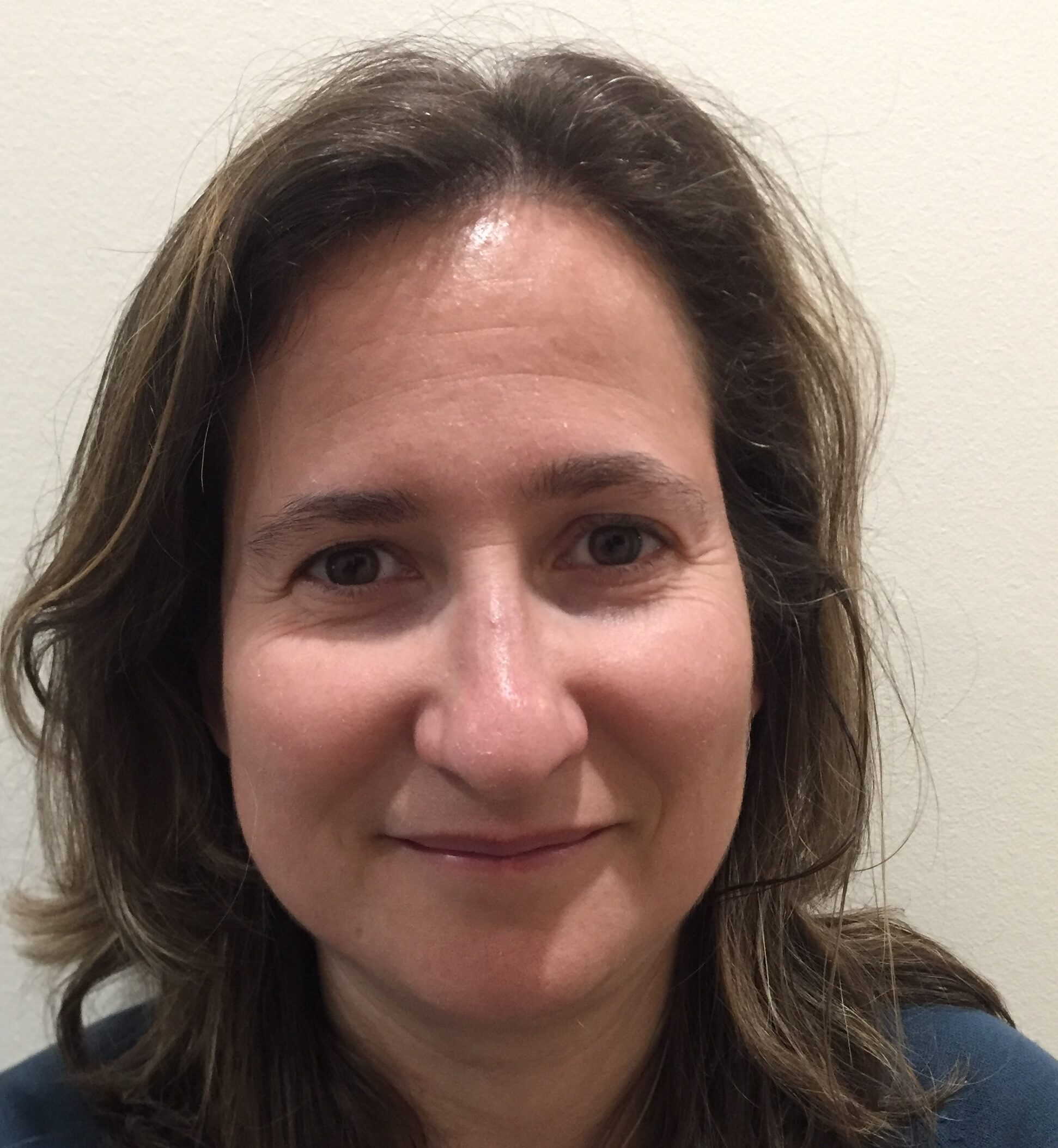
Experimental Methods To Characterize Two-Phase Flows In Microfluidic Devices: From Sustainable Industrial Applications To Biomedicine
Abstract
Microscopic phenomena occurring at liquid-solid interfaces govern fluid flow and heat transfer mechanisms in different micro and macro industrial applications. The characterization of these flows is complex, particularly at the microscale, where surface forces dominate and enhance effects, which are usually neglected at larger scales.
This lecture introduces a micro-to-macro scale approach for the detailed characterization of vapor and liquid phases, with particular emphasis on the quantification of velocity fields, temperature gradients and heat flux analysis. Different advanced diagnostic techniques are combined and used in various applications. Main case studies focus on recent developments of heat sinks based on microgeometries for flow boiling cooling. These geometries explore microchannels with non-uniform geometries (e.g. divergent channels, wavy shaped channels and flows around microcavities/micropillars).
In this context, an entire methodology is presented and discussed, comprising a custom-made optimization tool based on a genetic algorithm, to define the geometries to test, and an advanced experimental procedure combining high-speed imaging, post-processing based on machine learning and time and space resolved thermography. (Micro)PIV and PTV are further explored to characterize the velocity fields. The application of this methodology is then shortly demonstrated in a wider range of examples, such as in biomedical flows.
Short Bio
PhD (2009), MSc (2004) and Diploma Engineer (2001) in Mechanical Engineering in Instituto Superior Técnico, Technical University of Lisbon Ana Moita is an Assistant Professor at Instituto Superior Técnico, Universidade de Lisboa, a senior researcher in IN+, Center for Innovation, Technology and Policy Research/Instituto Superior Técnico and Director of the Laboratory of Thermofluids, Combustion and Energy Systems of this research center. A.S. Moita developed a strong background in wettability modification strategies, including micro-and-nanostructuring techniques applied to surface modification. In the last years, she has deepened these activities for microscale applications, towards devising microfluidic devices for thermal (energy conversion) and biomedical applications. PI/co-Pi of several national and international projects. Currently she has several projects in collaboration with the industry including a large project with UFRJ – Brasil and Petrobrás, towards the development of a microchannel based heat sink to cool high concentration photovoltaic panels. Through her work and scientific recognition, she gained support from a strong national and international network. Being the supervisor of 8 PhD’s (6 in progress), more than 70 Master Thesis, and several staying periods in the context of collaborative international programmes, A.S. Moita was an invited lecturer in various conferences/workshops. She received 4 awards/distinctions. She is a reviewer for numerous international conferences, more than 100 journals and 5 funding agencies (including ESA projects), being part of the scientific and or technical committee of 22 international conferences/workshops. A.S. Moita published 8 book chapters, more than 100 peer reviewed journal papers, most in Q1 and Q2 journals and around 200 conference papers (H=29, more than 2700 citations). She is Guest-Editor in various SI’s in journals from MDPI and part of the Editorial board of Experimental Thermal and Fluid Science, Elsevier, since august 2022.

Advanced Thermal-sprayed Coatings for Heating of Reinforced Polymer Composite Structures and Metal Pipes
Abstract
The Advanced Heat Transfer and Surface Technologies Laboratory at the University of Alberta was created with a view to conducting industry-relevant research in the area of thermal-sprayed surface modifications and to provide experiential research training to students and other practitioners. Since its inception in 2008, the Laboratory has successfully advanced research programs on development and functionalization of thermal-sprayed coatings and determination of material and wear properties of coatings. In particular, work has also been undertaken on the development of smart coatings for structure damage detection and coatings for resistive heating of fiber-reinforced polymer materials. In this presentation, a detailed discussion of recent experimental and modelling work relating to the fabrication, performance testing, and analysis of flame-sprayed resistive heating coatings for applications on polymer materials, steel pipes, airfoils, and membranes for water reclamation will be presented. The presentation will highlight the microstructure of the coatings, the effect of microstructure on the operational heating performance of the coatings, and mathematical modelling that has enabled qualification of the heat transfer performance of the coatings on various substrates. Throughout the presentation, it will be emphasized that the research can be viewed as a nexus of selected elements of mechanical engineering, materials science, and heat transfer.
Short bio
Dr. André McDonald is currently a Professor in the Department of Mechanical Engineering and the Immediate Past Associate Vice President (Strategic Research Initiatives and Performance) at the University of Alberta. He received his BSME in 2001 and his MSME in 2002 from the City College of New York. He was awarded his Ph.D. from the University of Toronto in 2007, under a collaborative research program with the National Research Council Canada in Boucherville, Québec. Dr. McDonald has more than twenty years of experience in the fabrication, development, and performance assessment of thermal- and cold-sprayed coatings. His current research involves the development of multi-functional coatings that provide wear and erosion resistance, heating, and structural health monitoring to a variety of structures. Modelling work to predict and analyze the performance of coatings is a focal feature of his research program. In addition to peer-reviewed scientific articles, Dr. McDonald has published a textbook on the practical design of thermo-fluids systems, a manual for thermal spraying for the Oil & Gas industry, several book chapters on thermal-sprayed coatings, and numerous industry reports. He has received several awards including the Jules Stachiewicz Medal from the Canadian Society for Mechanical Engineering for Heat Transfer, Fellow of The Institute of Materials, Minerals and Mining, Fellow of ASM, Fellow of The Institution of Mechanical Engineers, the Mentorship Award from the Faculty of Engineering (University of Alberta), and the Association of Professional Engineers and Geoscientists of Alberta’s Early Accomplishment Award. He holds Professional Engineer licenses in Canada (Alberta) and the United States (California) and is a registered Chartered Engineer in the United Kingdom. Dr. McDonald has trained nearly 100 students, fellows, and research associates in the areas of thermal spraying and heat transfer. Among many other leadership contributions, he was chair of the Natural Science and Engineering Research Council (NSERC) Scholarships and Fellowships Selection Committee – Civil and Mechanical Engineering and is currently the Lead Editor of the Journal of Thermal Spray Technology, and a Past President of the ASM Thermal Spray Society Board. He currently leads the Experiential Learning in Innovation, Technology, and Entrepreneurship (ELITE) Program for Black Youth – an externally funded university-government-industry-community collaboration to support hands-on learning and work-integrated training of Black Youth in science, technology, engineering, and mathematics (STEM) fields and in entrepreneurship.
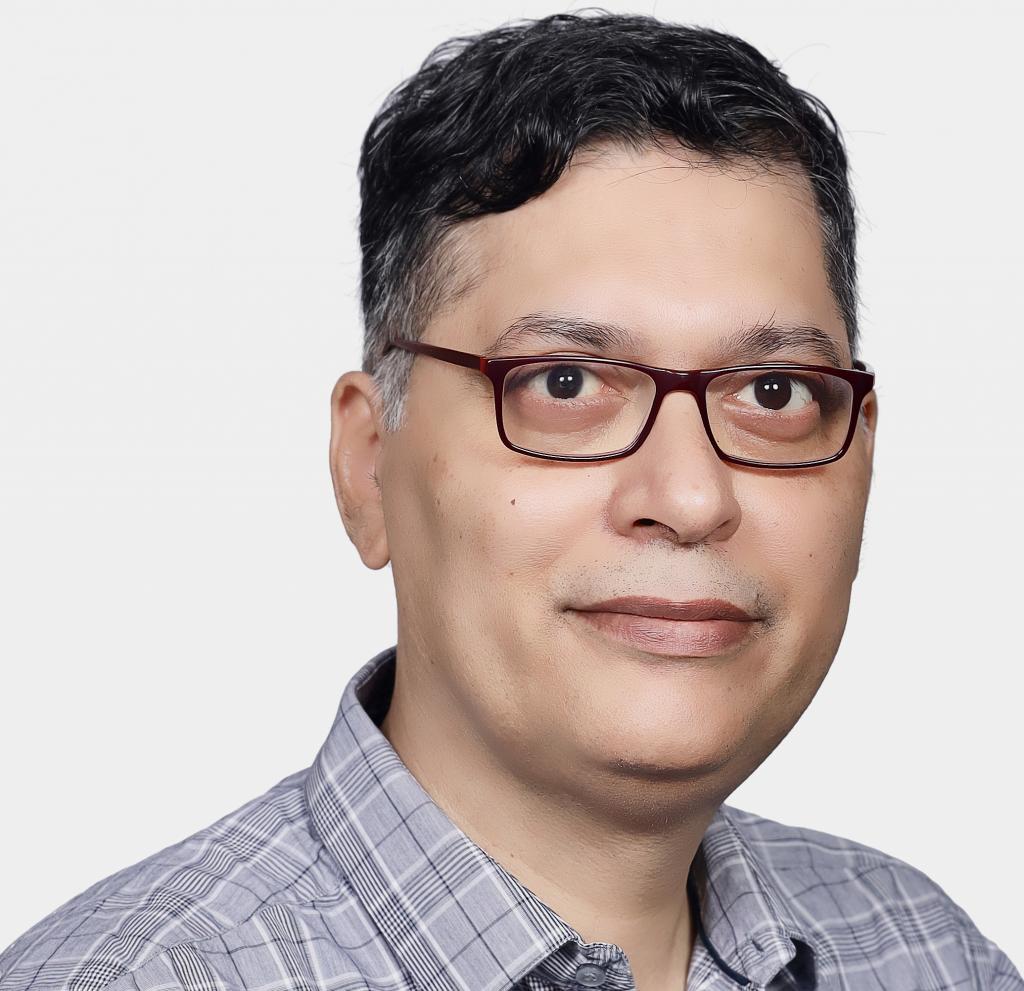
Physics-Informed and Deep Neural Network-based Computational Methods for Accelerating Time-Periodic Unsteady Multi-Physics CFD Simulations
Abstract
The present work is on novel computational methods, involving (a) unsupervised Machine Learning (ML)-based Physics-Informed Neural network (PINN) and (b) supervised ML-based Deep Neural Network methods—for obtaining the periodic flow directly; without transient simulations that may not be of interest. The motivation is a substantial reduction is computational time by meshless PINN-based periodic CFD approach as compared to the traditional mesh-based transient-to-periodic CFD approach. Further, for the DNN-based CFD approach, motivation is to accelerating parametric simulations methodology of time-periodic unsteady Computational Fluid Dynamics (CFD) simulations.
Effectiveness of the PINN-based periodic CFD approach is demonstrated for 2D heat and fluid flow problems. The proposed PINN-based periodic-flow solver primarily focuses on the time-periodic state, optimizing the neural network model’s trainable parameters to precisely fit a smaller time window (one time-period) rather than the temporal domain starting from the initial condition. Our results demonstrate that the PINN-based periodic solver takes substantially less computational time to achieve almost same accuracy as that obtained by the traditional transient-to-periodic solver.
For the DNN-based CFD approach, the proposed method starts with unsteady CFD simulations for a discrete input-parametric space (using a level-set function-based immersed interface method (LS-IIM)-based inhouse code), followed by Proper Orthogonal Decomposition (POD)-based data reduction of the periodic flow field (obtained from various combinations of parameters-based simulations), and finally using a DNN—on the reduced data—to accurately predict periodic (a) flow field and (b) engineering parameters on entire range of input-parametric space. Along with the LS-IIM-based inhouse flow solver, inhouse code is developed for the ROM and DNN. Effectiveness of the ROM-DNN-based predictive hybrid CFD method is presented on two CFD problems: first, flow across an elliptic cylinder for various upstream and downstream aspect ratios (ARU=0 to 2.0, and ARD=0 to 2.0) at Reynolds number Re=100; and second, flow-induced vibration (FIV) on an elastically mounted circular cylinder for various reduced velocity U*=3–12 at a constant mass ratio m*=2.0, damping coefficient =0.005, and Re=100. The present work is significant as the proposed ROM-DNN-based hybrid CFD method predict fluid dynamics results in the entire range of input parametric space, as compared to results at discrete parametric values by the traditional CFD method.
Short Bio
Dr. Atul Sharma is a Rahul Bajaj Chair Professor and Head of the Mechanical Department at IIT Bombay. His contributions are on development of a range of novel and efficient computational tools, their applications to numerous time-consuming simulations, and analysis of the resulting big-data for various problems in Computational Fluid Dynamics (CFD). Presently, research in his computational fluid dynamics laboratory is focussed on developing AI/ML-based computational methods for efficient simulations of multi-physics scientific and industrial problems—in solid mechanics, fluid mechanics and heat transfer. His research led to development of numerical methodology and in-house computer programs, and demonstrated numerous innovative CFD applications and provided scientific understanding of various types of problems: fish-like swimming, energy harvesting from flow-induced vibrations, sustaining nucleate boiling at zero gravity, flexible solid-based enhancement of chaotic-mixing, and for droplet impact on self-cleaning surfaces. He also demonstrated simulations for industrial problems on circuit breaker, power transformer, and printed circuit heat-exchangers. He proposed a physical, insightful, and comprehensive approach for CFD, in his well-received textbook, to enable his vision of MAKE CFD-SOFTWARE IN INDIA!
Prof. Sharma is a Fellow of Indian National Academy of Engineering (INAE). His wide-variety of research is published as 142 articles in 50 different well-recognized international-journals, 97 conference-proceedings, and 14 chapters in 5 edited-books; and appeared in cover page of top-class journals (JFM, POF and Langmuir). He contributed as a CFD consultant at Global R&D, Crompton Greaves Limited, Mumbai, served as Secretary, National Society of Fluid Mechanics and Fluid Power, and presently, an associate-editor for 3 international journals: Theoretical and Computational Fluid Dynamics, Sringer; Interfacial Phenomena and Heat Transfer, Begell House; and Sadhana – Academy Proceedings in Engineering Sciences, Springer. He is a Co-Founder and Scientific advisor of a Start-up, Experiqs Pvt. Ltd, initiated by one of his PhD student. He received ”IIT Bombay Departmental Award for Excellence in Teaching 2019” and “IIT Bombay Research Dissemination Award 2020”.
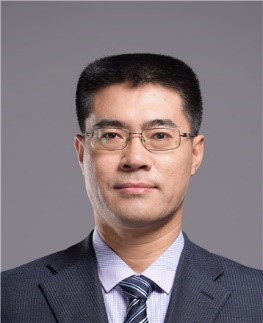
Thermal Design Automation for multiscale thermal managements of electronic systems
Abstract
Modern semiconductor devices face critical thermal management challenges as power densities increase and feature sizes approach nano/microscale dimensions where classical Fourier’s heat conduction laws break down. Traditional chip design approaches that rely primarily on only electrical designs and external cooling solutions are insufficient to address the complex, multiscale nature of thermal transport in advanced integrated circuits. This perspective presents a comprehensive Thermal Design Automation (TDA) framework, as a complementary extension to traditional Electronic Design Automation (EDA) tools, that systematically integrates thermal simulation and management methods across all length scales of semiconductor design. The TDA approach begins with first-principle calculations and machine learning potentials to predict atomic-scale thermal properties, and lattice dynamics simulations to predict interfacial phonon transmission. These fundamental properties parameterize phonon Monte Carlo simulations that solve the Boltzmann transport equation to capture non-Fourier heat spreading within transistors, while self-heating effects are simulated by solving fundamental semiconductor device equations. For larger scales, finite element methods and compact thermal models bridge the gap to circuit- and die-level thermal analysis and design, while advanced liquid cooling technologies address chip-level heat dissipation. Through multiscale thermal simulation and design optimization, the TDA framework enables systematic reduction of transistor heat generation, minimization of device and chip thermal resistance, and acceleration of chip design cycles, thereby enhancing overall performance and reliability. This integrated framework addresses the fundamental limitations of existing macroscopic thermal simulation tools and establishes a new EDA+TDA paradigm for thermal-aware semiconductor design that can systematically tackle the multiscale thermal bottlenecks limiting further technological advancement in modern electronics.
Short Bio
Bingyang Cao is full professor and dean in the School of Aerospace Engineering, Tsinghua University, China. He is fellow of Asian Union of Thermal Science and Engineering, International Association of Advanced Materials, and Engineered Science Society. He currently serves as Delegate of the Assembly for International Heat Transfer Conferences, vice-president of the Asian Union of Thermal Science and Engineering, vice-chair of the Heat and Mass Transfer Society of China, vice-chair of the Thermally Conductive Composite Committee of the Composite Society of China, vice-chair of Committee of Aircraft/Vehicle Thermal Management, etc. He was awarded MOE New Century Talented Scientists Program (2011), Wu Zhonghua Outstanding Young Scholar Award from CETS (2014), Outstanding Young Scientists of NSFC (2018, continued 2024), First Prize of Natural Science of MOE (2019), Elsevier Highly Cited Researchers (2021-2024). His main research areas include micro-/nanoscale heat transport, thermally functional materials and advanced thermal management technologies. He has published a monograph: Non-Fourier heat conduction in nanostructures, and more than 200 SCI-indexed journal papers. He is currently serving as Editor-in-Chief of ES Energy & Environment, Associate Editor of International Journal of Thermal Sciences & Carbon Neutrality, and editorial member of over 10 international journals.

Probabilistic Heat Transfer Coupled with Deterministic Flow Simulation for Improved Urban Climate Predictions
Abstract
Our cities are getting hotter, particularly during heatwaves, which impacts our comfort and energy bills. It is crucial to predict how heat moves through complex urban areas, from buildings to streets, in order to design cooler, more sustainable cities. However, current methods struggle to cope with the complexity of urban landscapes. This paper introduces a revolutionary computer model that addresses this challenge. Using the sophisticated Monte Carlo technique, our model can accurately simulate combined heat transfer in complex city geometry, accounting for precise thermal and solar radiative heat transfers. Unlike previous models, ours can handle intricate city designs with ease, enabling us to understand the combined effects of conduction, convection and radiation. We have demonstrated the high accuracy of our model, even in detailed 3D city environments. For example, we used it to simulate a heatwave, demonstrating that planting trees can significantly cool streets during the day, although they might slightly reduce night-time cooling. This new tool will empower researchers to improve the coupling of building energy models with urban climate models, and ultimately create cities that are more comfortable and energy-efficient for all.
Short Bio
Dr Cyril Caliot is a senior researcher at LMAP/UPPA/CNRS and the scientific leader of FEDESOL, a French research federation on solar energy. Having obtained a doctorate in energetics and transfers from INP Toulouse and Mines Albi in 2006 and an HDR from UPVD in 2015, Dr Caliot is a renowned expert in heat transfer and solar energy. His extensive career includes significant research positions at PROMES CNRS, where he served as a researcher and team leader. He has played a key role in coordinating and leading various national and international research projects focusing on topics such as coupled heat transfers, Monte Carlo methods and concentrated solar power. His work is highly cited, reflecting his substantial contributions to the field.
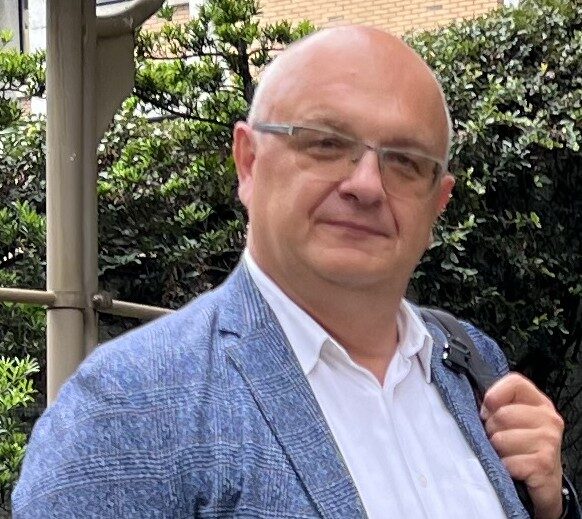
Dissipation energy in modelling of complex flows
Abstract
Generally the classical methods of modelling complex flows such as for example flow boiling fall into three categories, namely strictly empirical (the heat transfer coefficient is an empirical correlation usually presented in function of Martinelli parameter), based on superposition of convective and nucleate boiling effects (however the way in which superposition is introduced has no theoretical background), and finally phenomenological models. Understanding of the physics of local boiling in various regimes, namely in subcooled, saturated and post-dryout flow regimes inside heated channels is still unsatisfactory, which makes its understanding incomplete, and still the analysis of the flow boiling issue is very challenging. Similar situation is found in case of flow condensation or other complex flow cases.
An alternative approach to modelling convective flows where dispersion of energy is present is offered by considerations of dissipation energy. The energy in general is an additive property and it is this feature of that entity that has been used in the examples presented. Attention was focused on modelling flows with boiling or condensation under saturated, subcooled and superheated conditions. The proposed approach was applied to the analysis of mist flow and supercritical heat transfer. In these cases too, consistent results were obtained, which confirm the ability of the presented modelling to predict complex flows with heat transfer and non-linear effects. It should also be noted that the approach to obtaining a solution in a complex flow based on the summation of dissipation energies has also worked well in other cases such as bubbly flow in the boundary layer.
Short Bio
Dariusz Mikielewicz received his Master of Science degree from the Gdansk University of Technology in the area of Refrigeration Technology in 1990. Subsequently he competed his doctoral education at the Victoria University of Manchester, Great Britain, where he was awarded a PhD degree from the Mechanical and Nuclear Engineering Department in 1994 for the studies on the performance of turbulence models in modeling of mixed convection in tubes. He then joined in 1994 the Nuclear Electric plc, where he was an engineer involved with the development of the safety reactor code Panther. In 1996 he returned to Poland, where he took up employment at the Faculty of Mechanical Engineering of Gdansk University of Technology (FME GUT) at the Heat Technology Department (currently Institute of Energy), and where he is still employed. In 2002 he was awarded the Doctor of Science degree (habilitation) for the studies into modeling of two-phase flows in two-phase boundary layers. In years 2004-2008 he served as an elected member of the Council for Science at the Ministry for Science and Higher Education. In 2010 the State Committee for Degrees and Titles approved his credentials for the title of professor. Since 2022 he is the corresponding member of Polish Academy of Sciences.
His research interests include modeling of single and two-phase heat transfer in conventional and small diameter channels, mainly in the light of phase change, intensification of heat transfer, and passive transport of heat. His technical applications are at heat recovery from industrial processes and waste heat, high temperature heat pumps and ORCs, and thermal-hydraulics in nuclear reactors. At the moment he serves the post of the vice-rector for research at Gdańsk Tech.
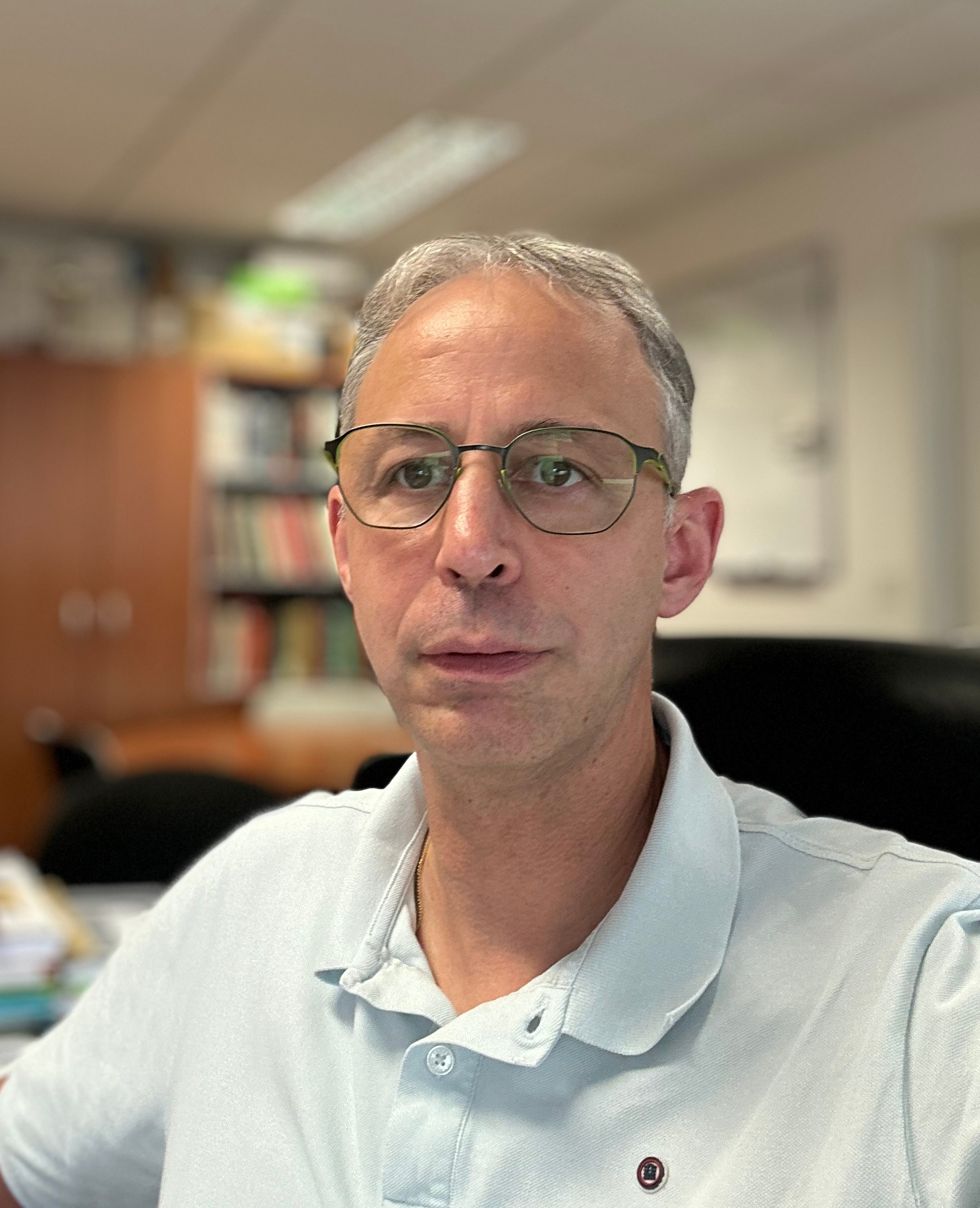
Impact of radiation on natural convection flows of a participating gas: illustrations, issues and challenges through some examples
Abstract
Natural convection flows are known to be highly sensitive to perturbations that can significantly impact their behavior. In such flows, radiation acts as a perturbation: gas radiation disturbs the convective motion by modifying the temperature of the fluid, whereas surface radiation modifies the boundary conditions. The interaction between natural convection and radiation gives rise to complex situations that are difficult to predict due to the intricate interplay of the phenomena influencing the flow topology and regime, transition thresholds to unsteadiness or turbulence, and, more broadly, the stability of the flow. This coupled convection-radiation problem is of paramount importance in many aspects related to closed, air-filled spaces, where even at ambient temperature, the water vapor contained in the air plays a significant role. Even more challenging situations occur in mixtures when an absorbing species diffuses into another gas. These are the well-known double diffusion convection flows, where mass and thermal gradients drive buoyancy forces simultaneously. Depending on the situation, gas radiation can either promote or stabilize flow instabilities. One of the main challenges in simulations when gas radiation is considered is finding a suitable gas absorption model. In such situations, the latest versions of global models based on k-distributions (SLW, FSK and ADF) provide reliable tools. This paper presents a review of some typical case studies of coupled natural convection and radiation, with data from experiments or numerical simulations. These involve canonical configurations such as differentially heated cavities, thermal plumes or localized heat sources. The aim is to provide a perspective on real-life situations involving convection-radiation coupling and the available methods and tools for analyzing and solving them, as well as the issues that arise.
Short Bio
Prof. Didier Saury graduated in mechanics and energetics from ENSIMEV (Valenciennes, France) in 2000 and obtained his PhD in energetics in 2003. Then he joined University of Poitiers (France) as assistant professor and becomes Professor at ISAE-ENSMA (Poitiers, France) in 2013. His research activities take place at the Institut PPRIME (Poitiers, France) in the “Convection, Optimization and Thermal systems” team. They mainly concern natural convection with and without radiation and estimation methods in thermal sciences. Since 2020, he serves as deputy head of the “Fluid, Thermal and Combustion sciences department” of the Institut PPRIME. He is also a member of the board of directors as well as the Scientific Committee of the French Society of Heat Transfer (SFT) and a member of the Scientific Committee of the International Centre for Heat and Mass Transfer (ICHMT).
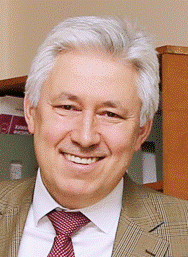
Structure of turbulent reacting jet flows. Diagnostics and control
Abstract
Jet flows are widely used in different technical applications, including combustors, jet propulsion, and impinging heating and cooling. In particular, jet flows with superimposed swirl are typical for burners, where the flame stabilization is provided by a swirl-induced central wake zone with flow recirculation. The central wake anchors the flame via local heat and mass exchange between the trapped combustion products and fresh reactants issuing from the swirl nozzle. The flow swirl also dramatically intensifies local turbulent heat and mass transfer and increases the overall efficiency of mixing and combustion. This is achieved via the formation of helical vortices in the mixing layer of the jet flow. However, for jets with a high swirl rate above a certain critical value, a bubble-type breakdown of the vortex core occurs and results in unsteady flow dynamics with intensive velocity and pressure pulsations near the nozzle exit. The unsteady flow behavior is associated with precession of the vortex core and rotation of secondary helical vortices. The related large-scale coherent flow structure is considered to be caused by global flow instability, triggered by the formation of a central recirculation zone. Currently, there is still a lack of experimental studies on flow structure and local heat and mass transfer in turbulent swirling jets with combustion.
The present talk provides a synthesis of the impact of large-scale vortex structures on the unsteady flow dynamics and flow-flame interactions in jet flows with swirl and combustion. The focus is placed on the quantitative experimental evaluation of the contribution of the vortex structures to the local turbulent transfer by using state-of-the-art optical measurement techniques, namely particle image velocimetry and planar laser-induced fluorescence (PIV and PLIF). The perspective of jet-flame stability control by low and high swirl, periodic flowrate perturbations, and weak electric fields is also discussed. Finally, the practical aspects and challenges of high-efficiency and low-emission hydrocarbon fuel (kerosene, natural gas, and low-carbon fuel blends) combustion for gas turbine applications will be discussed. Such studies rely on the planar optical PIV and PLIF measurements in model combustion chambers at elevated temperature and pressure.
Short Bio
Professor Dmitriy Markovich graduated from Krasnoyarsk State University in 1984 as a bachelor on fluid mechanics and thermal sciences. He got his PhD in 1994 and habilitation degree Doctor of Sciences in 2003 at Kutateladze Institute of Thermophysics SB RAS. He has authored or co-authored more than 500 papers as well as several book chapters and was a supervisor of more than 15 PhDs and 5 Doctors of sciences. To date, Dmitriy Markovich has worked his way up from a graduate student to the director of the institute. Since 2011 he has been a member of the Russian Academy of Sciences.
Research interests of Prof. Markovich are related to the study of hydrodynamics and heat and mass transfer in multiphase gas-liquid and combustion systems, active and passive control of the intensity of transfer processes. Over the years, he and his colleagues have obtained a number of fundamental and applied results on the structure of swirling flames, wavy liquid films, cavitation processes and interphase interactions in annular gas-liquid flows. Professor D. Markovich and his colleagues successfully develop and apply modern optical methods to experimental hydrodynamics. Their results obtained using the PIV and LIF methods have in some cases world priority. Thus, for the first time, using the tomographic PIV method, the time-resolved 3C3D velocity field in a swirling turbulent jet with combustion was reconstructed.
The results obtained by group of Prof. Markovich were widely used for developing and improving a row of heat, hydro and nuclear power engineering and chemical technologies.
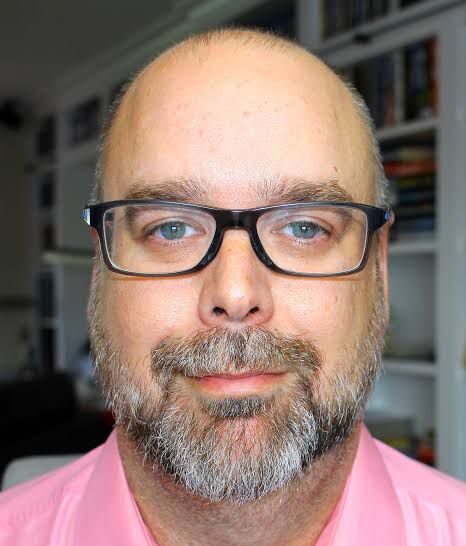
Comparison Metrics and Design Rules for Phase Change Material based Thermal Energy Storage Systems: International Efforts and Progress
Abstract
A major impediment to the development and technological/economical acceptance of phase change material (PCM) based thermal energy storage (TES) systems is the lack of systematic design rules. Currently, for any given application, PCM-based TES must be selected through expensive and lengthy trial-and-error testing involving prototyping, construction and experimental characterization campaigns. These points were raised during a Keynote presentation at the International Heat Transfer Conference in 2018 (Beijing). How has the field progressed towards the development of design rules in the last 8 years?
Recognizing these important limitations, the TES research community has implemented series of research programs, through individual researcher’s labs culminating in international coordinated research efforts, including the new joint Task 74/47 from the International Energy Agency (IEA) titled Components for Thermal Energy Storage with a subtask dedicated to TES Design. The first step needed towards design rules is the development of comparison metrics. Various possible approaches are currently studied, using traditional metrics such the effectiveness, UA-values, or based on dimensionless numbers such as the Nusselt number, and new metrics altogether, from normalizing system power to system storage capacity, to understanding the impact of the heat transfer driving force on potential metrics.
This Keynote lecture will present on the state of research and development on comparison metrics and design rules for these systems, with the aim again of helping the heat transfer community at large understand the important questions to tackle to move the field significantly forward. The hope is to leave the lecture with more questions than answers, and prompt important future contributions from researchers, old and new, in the field.
Short bio
Dr. Dominic Groulx is a Professor and Head of the Department of Mechanical Engineering at Dalhousie University. He received a BSc (Physics) in 1999 and a PhD (Mechanical Engineering) in 2005 from l’Université de Sherbrooke. His PhD research set the basis for the fundamental processes playing a role in the process of close contact melting. After joining Dalhousie University in 2007, Dr. Groulx founded the Lab of Applied Multiphase Thermal Engineering (LAMTE) where he has trained over 100 highly qualified researchers and published over 250 journal and conference papers, book chapters and technical reports.
Dr. Groulx is a world leader in the field of solid-liquid phase change heat transfer and latent heat based thermal energy storage/thermal management, giving invited keynote lectures at the top international conferences in the field and research centers/universities. He is also the author of invited book chapters dealing with the design of thermal storage systems and thermal management of electronics. This research expertise has led to collaboration with some of the largest multinationals, the likes of Intel Corporations, Raytheon and Pratt & Whitney to name a few, and with researchers across the world, from France, Spain, through Africa and Asia, all the way to Australia. For his work, Dr. Groulx is the latest winner of the Stachiewicz Medal for excellence in heat transfer awarded by the Canadian Society for Mechanical Engineering (CSME) in 2025, he also received the title of Fellow of ASME in 2024.
From a leadership point of view, beyond being the Head of his Department, Dr. Groulx was asked to be inaugural chair of the Canadian Society for Mechanical Engineering (CSME) Heat Transfer Technical Committee and is the current senior Canadian representative on both the Assembly for the International Heat Transfer Conference (AIHTC) and the International Center for Heat and Mass Transfer (ICHMT), representing the Canadian Heat Transfer community. He is a co-chair (fluids stream) of the Natural Science and Engineering Research Council (NSERC) of Canada’s Discovery Grant evaluation committee for Mechanical Engineering He is an Associate Editor for the Journal of Energy Storage and the Specialty Chief Editor for the Thermal Management Section of Frontiers in Thermal Engineering.

Infrared Thermal Imaging in Exercise Science: Applications, Insights, and Modeling
Abstract
Human body temperature comprises the temperatures of the core and skin. Core temperature, regulated by the hypothalamus, reflects the thermal state of deep body tissues and is typically maintained within a narrow range around 37°C. In contrast, skin temperature, affected by environmental conditions and peripheral blood flow, can vary significantly across body regions and during physical activity. Infrared thermography (IRT), widely used in engineering, is increasingly being applied in medical and sports sciences as a non-invasive method for assessing skin temperature. In sports and exercise science, IRT is employed to evaluate performance, monitor injury recovery, and detect vascular changes induced by exercise. Among various sports, such as cycling, swimming, and running, the last discipline is one of the most extensively studied for thermographic analysis, owing to its widespread practice and the physiological stress it imposes. As a result, analyzing skin temperature responses via IRT can provide indirect insight into an athlete’s fitness level and thermoregulatory efficiency. Despite its potential, IRT lacks standardized methodologies, leading to variability in data acquisition and interpretation. This note highlights the following key challenges:
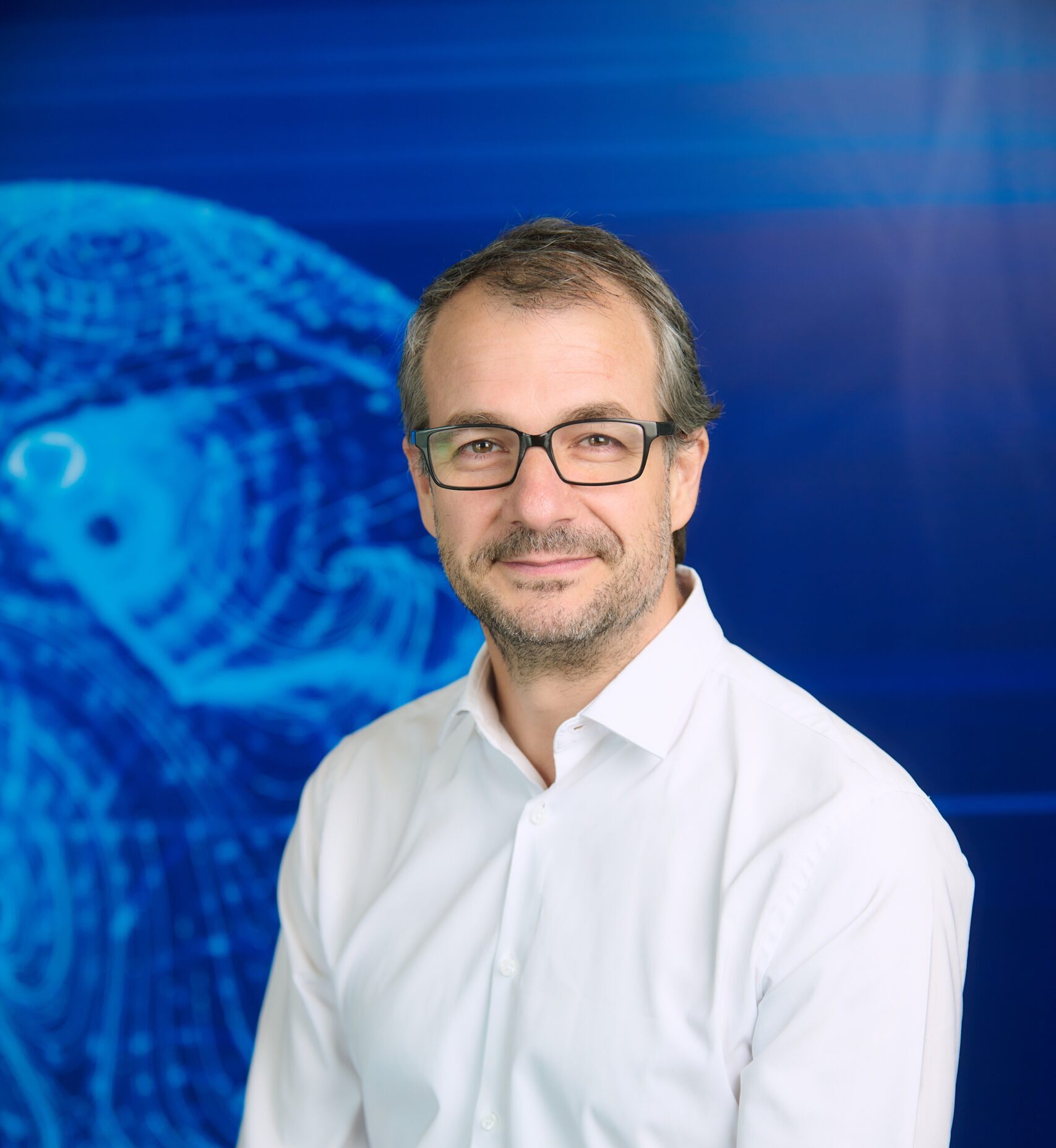
The Fire Within: Understanding Wildfires Through the Lens of Heat Transfer
Abstract
Wildfires are natural hazards that are growing in destructive power, and their behaviour is fundamentally driven by heat transfer. To understand how wildfires ignite, spread, and are suppressed, we must examine the interplay of conduction, convection, and radiation within complex, porous biomass fuels and across scales from the micro to the landscape.
This keynote explores wildfire dynamics through the lens of heat transfer. I will discuss how these transport processes govern ignition thresholds, fire spread modes (surface, crown, and ground), firebrand generation, and transitions between flaming and smouldering combustion. These mechanisms often lead to nonlinear and unexpected fire behaviours, especially under dry and windy conditions.
Examples from recent destructive wildfires, including urban events like London 2022 and Los Angeles 2025, illustrate how heat transfer drives fire growth across both natural and built environments. I will also highlight recent advances in modelling, experimentation, and sensing that improve our ability to understand, predict, and manage fire behaviour.
Understanding wildfires as thermochemical systems is essential for designing safer communities and adapting to a future of more intense and frequent fires. The science of heat transfer offers a powerful framework for mastering the hazards of fire and safeguarding society.
Short bio
Guillermo Rein is Professor of Fire Science and Director of Research at the Department of Mechanical Engineering at Imperial College London. He leads the Hazelab research group, which investigates heat transfer, combustion, and materials in the context of fire safety in the natural and built environments.
His research focuses on wildfires, smouldering combustion, battery fires, and the safety of modern buildings, including facades and timber construction. He is known for combining experiments, theory, and modelling to advance understanding of fire behaviour across scales, from materials to buildings and landscapes, and to improve safety of communities. His group’s work has influenced fire safety engineering, international standards, policy, and views on climate science.
He is Editor-in-Chief of Fire Technology, a leading international journal in fire science and engineering. He has authored over 150 peer-reviewed publications and delivered keynote lectures worldwide. His recognitions include the Research Excellence Award and the Sugden Award from The Combustion Institute, the Guise Medal from the Society of Fire Protection Engineers, the NFPA Medal, and the Officer’s Cross of the Order of Isabella the Catholic from the King of Spain.
Originally from Spain, he earned his PhD at the University of California, Berkeley, and his engineering degree from ICAI in Madrid, Spain. He is passionate about teaching, mentoring and public outreach in science and engineering.
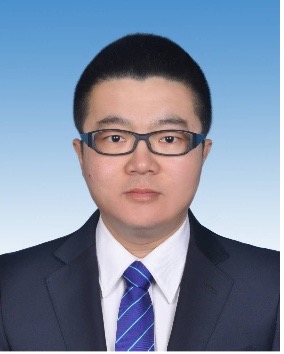
Integrated Coupling Analysis of Electric Power and Thermal Energy Management Systems in Hybrid-Electric Propulsion (HEP)
Abstract
With the adoption of megawatt-class electric machines, power conversion devices, and high-specific-energy batteries, thermal management has become a critical challenge in multi-electric aircraft propulsion systems, particularly represented by hybrid-electric systems. Simultaneously, the powertrain, electrical power system, and thermal management system form a deeply coupled and multi-scale interactive system encompassing power, electricity, and heat. Enabling cross-scale coupling analysis and efficient management of this multi-energy system (power-heat-electricity) is key to unlocking the potential of Hybrid Electric Propulsion (HEP). Current research on electrical and thermal management systems remains relatively independent, unable to address the multi-time-scale coordinated management required for multi-electric propulsion systems. Moreover, the overall design of propulsion systems lacks a systematic integration methodology with trade-offs.
For the system evaluation, a deep-integration approach for power-electricity-heat in multi-electric aircraft propulsion is proposed. This approach, based on unified mass-energy-heat conservation equations, incorporates electric propulsion components, thermal management system components, and multiple heat sinks into a unified design space, establishing a performance evaluation model for HEP systems. For the dynamic thermal management, a dynamic modeling method for thermal management components based on equivalent control volumes and the fusion of reduced-order models is introduced. This enables dynamic simulation and real-time prediction of thermal pipe systems, resolving multi-system, cross-time-scale control challenges.
For the collaborative optimization of multi-system, a dynamic co-optimization framework with a dual-level energy-thermal game architecture is constructed. This framework targets the three-dimensional coupling objectives of energy efficiency, thermal safety, and flight performance. The two layers engage in continuous gaming and control through dual variables representing energy consumption costs and temperature constraints. Overall, the above methods provide a practicable solution for next-generation engine energy-thermal collaborative management.
Short Bio
Haiwang Li, Professor at the Research Institute of Aero-Engine of Beihang University (BUAA). He also serves as the Standing Committee Member of the Engineering Thermophysics Committee of the China Association of Higher Education, Member of the Electric Aviation Committee of the Chinese Society of Aeronautics and Astronautics, Committee Member of the Thermal Fluid Machinery Subcommittee of Chinese Society of Engineering Thermophysics, and Vice-Chair of the Committee of Aircraft/Vehicle Thermal Management. He was awarded the Outstanding Young Scientists of NSFC (2022), National Technology Invention Second Prize (2024), and First Prize of Natural Sciences from the Chinese Society of Aeronautics and Astronautics (2021 ). His main research areas include gas turbine engine turbine blade cooling, Integrated coupling analysis of electric power and thermal energy management systems in hybrid-electric propulsion.
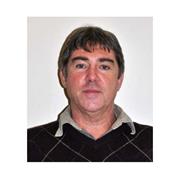
Heat transfer and pressure drop in a packed bed of crushed rock thermal energy storage system
Abstract
Concentrated solar thermal energy (CSE) is a clean and sustainable form of energy for power generation and process heat especially in countries with a good solar resource. Thermal energy storage (TES) is required for a continuous output to bridge the intermittent solar resource (the diurnal cycle and cloud events). CSE with TES is cost competitive with solar voltaic energy with battery storage when storage time exceed six hours or more.
Using air a heat transfer/working fluid, crushed rock TES offers a low-cost CSE solution with minimal environmental impact. The irregular shape of crushed rock particles leads to a pressure drop and heat transfer coefficient that dependends on the orientation of particles relative to the main flow direction. Crushed rock results in anisotropic pressure drop and heat transfer in packed beds, invalidating the standard isotropic correlations for packed beds of spheres.
This paper discusses particle characterization and the derivation of a representative particle shape, physical experiments with crushed rocks and the representative particle, as well as discrete element (DEM) and computational fluid dynamics (CFD) modelling of packed beds of representative particle shapes done at Stellenbosch University to find a tensor formulation for the pressure loss and heat transfer coefficients for a packed bed of crushed rock. The work concludes with the experimental validation of the tensor model against a packed bed of crushed rock particles.
Short Bio
Jaap Hoffmann completed his undergraduate and postgraduate education (M Eng and Ph D) at the Department of Mechanical Engineering at Stellenbosch University. He worked at ESKOM Matimba power Station as an engineer from 1993 – 1996. In 1996, he moved to ESKOM Technology Services International where he was senior engineer (computational fluid mechanics) until 2001. In 2001 he joined PBMR as a senior engineering specialist (CFD) tasked with verification and validation. Joined the department of Mechanical & Mechatronic Engineering at Stellenbosch University in 2012, where his research focus moved to solar thermal energy, and thermal energy storage in particular. That gave him about equal exposure to fossil fuel, nuclear and renewable energy. He is registered as a professional engineer with the Engineering Council of South Africa (ECSA), and published over 65 peer reviewed journal and conference papers. He has served as regional editor for the Journal of Thermal Engineering, and is invited editor for the special issue on Advances in Thermal Energy Storage Systems: Methods and Applications in MDPI Energies Journal, and editor of ICFTES 2022.
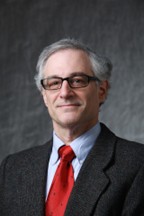
Change-of-Phase Heat Transfer in Microgravity
Abstract
Change of phase heat transfer processes are critical to thermal management, fuel management, and water recovery on Earth and in microgravity. The Space Shuttle and International Space Station made long-duration studies of phase change possible. We have run a number of experiments on the ISS in this area looking particularly at heat pipes and flow boiling and condensation.
Heat pipes combine thermal conduction, liquid-vapor phase change, and often, capillary flow, to transport energy efficiently between a heat source and a heat sink. Since, a heat pipe’s fluid circulation is driven by interfacial forces, the devices operate without any moving parts, which makes them simple, light, and reliable: perfect for space exploration.
Transparent, wickless heat pipes of square cross-section were operated in the microgravity environment aboard the International Space Station off and on for the past 15 years to map the liquid-vapor interface and liquid film thickness profiles and understand the fluid flow and heat transfer characteristics of their operation in microgravity. Partly due to the low thermal conductivity of the glass walls, as heat inputs were increased, thermal Marangoni flows developed that flooded the heater end and in the shortest version, a form of slow-motion boiling. In the most recent version of the device, a 50:50 binary liquid mixture was used to offset the problematic thermal Marangoni flow. The mixture formed a self-sustaining oscillator that improved performance and was precise enough to serve as a rudimentary clock.
Recently, we have been looking at transients and instabilities during flow boiling and condensation. The goal was to understand how changes in flow rate and heater inputs affect boiling and condensation processes in microgravity in the regime prior to critical heat flux. Subcooled flow boiling is promising for space applications since it can control the motion of bubbles near the heated surface and enhance nucleate boiling. We performed flow boiling experiments using n-perfluorohexane in a rectangular channel. The comparison of results of μg and 1g experiments, demonstrates that when the vapor quality is low, gravity plays only a small role in the mechanisms behind flow boiling. Gravity does not appear to affect when critical heat flux occurs at the flow rates tested. A correlation linking the wall superheat temperature to the total heat duty, was developed to quantify these effects.
Keywords: heat pipe, Marangoni stress, flow boiling.
Short Bio
Joel Plawsky is currently Professor of Chemical Engineering in the Department of Chemical and Biological Engineering at Rensselaer Polytechnic Institute. He received his BS degree in Chemical Engineering from the University of Michigan and his MS and ScD degrees in Chemical Engineering from MIT. Prior to joining Rensselaer, Joel worked at Corning, Inc. developing novel glasses and optical fiber devices. Joel’s primary research area lies in describing transport processes in thin films, both liquid and solid. For many years, he has worked on understanding evaporation and condensation processes occurring in liquid menisci and has successfully conducted experiments in that area on the International Space Station. He is the author of the textbook, Transport Phenomena Fundamentals, 4th edition, published by CRC Press and is a regular contributor to ASME J. Heat Transfer, Int. J. Heat & Mass Transfer, Int. J. of Multiphase Flow, J. Applied Physics, and others. Joel is a Fellow of AIChE and ASME. He holds a dozen patents in the areas of fluid-particle systems, thermal interface materials, flow boiling thermal management, membranes, and an optical technique for measuring the size and velocity of bubbles and drops in two-phase systems.
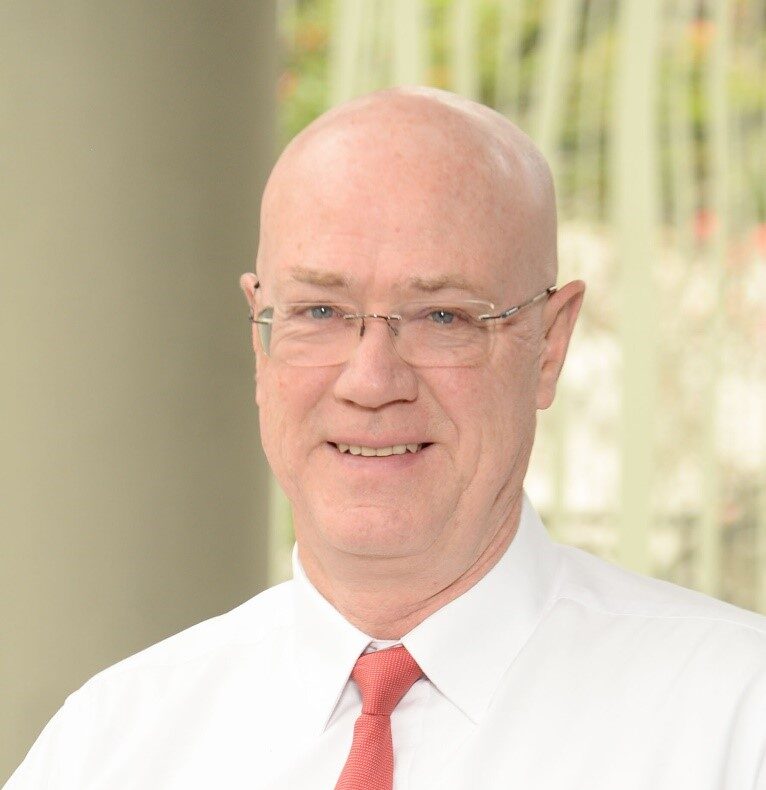
CFD simulation of phase change heat transfer – modelling of melting and solidification in industrial and solar applications
Abstract
The keynote paper will summarize the modelling approaches available for the melting and solidification simulation in Computational Fluid Dynamics (CFD) codes. Methods that will be covered include the enthalpy-porosity (EP) method, the apparent heat capacity method (AHC) and the optimum enthalpy (OE) approach (all fixed-grid methods), especially as they impact latent heat and velocity transition modelling. An overview will include a discussion of phase change materials (PCMs) being used for thermal storage applications. Of interest here are the thermal properties required by the CFD models and the role and extent of the mushy zone or the temperature interval of phase change. Thereafter the paper will present various case studies of phase change material (PCM) enclosures aimed at enhancing the melting performance by varying container shape, heating method and geometry, and orientation relative to the gravitational vector. CFD modelling parameters that influence the accuracy of the validation will be discussed, especially as to how the efficiency and accuracy of the modelling process can be increased. The role of CFD modelling to enhance the understanding of PCM melting above that possible from experimental studies will be emphasized. Here the role of convection heat transfer in the melt is especially of interest. For solar applications, the determination of the heating profile is illustrated. Turning to solidification, the modelling of the formation of a freeze lining between the slag layer and refractory in an open-arc furnace will be presented. Special emphasis will be placed on speeding up the solution time through the use of a calibrated wall-function approach. The calibration will be done with a high-resolution CFD model of the freeze lining formation using a selection of the above approaches.
Short Bio
Ken Craig is a Professor of Mechanical Engineering at the University of Pretoria in South Africa. He has so far spent 27 in academia with a 5-year interlude in the nuclear industry, ending as Fellow Engineer at Westinghouse. He obtained his BEng and MEng degrees in Mechanical Engineering from the University of Pretoria and then received his PhD in Aeronautical Engineering from Stanford University in 1992, in the field of Computational Fluid Dynamics (CFD). His research interest is focused on the application of Computational Fluid Dynamics (CFD) to complex industrial phenomena. Recent applications include jet impingement boiling to enhance electronics cooling; radiation and convection heat transfer in concentrated solar energy receivers; atmospheric boundary layer modelling of sub-Antarctic islands and wind loads on and fluid-structure interaction of solar collectors; and the implementation of CFD in design optimization. His current focus is on modelling phase change materials, especially as found in thermal storage and industrial applications. He has published 52 papers in peer-reviewed journals and has been involved in 114 national and international conference publications and presentations.
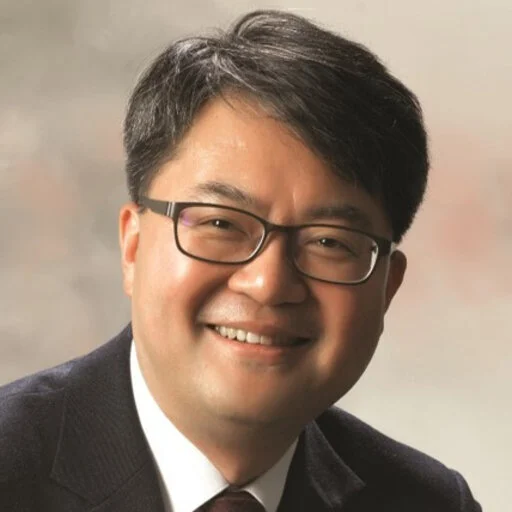
Innovative Thermal-Hydraulic Performance Validation to Advance SMR Technologies through State-of-Art Separate Effect Test Campaigns
Abstract
Small Modular Reactors (SMRs) are emerging as a game changer in the nuclear industry, offering enhanced safety, flexible deployment, and economic scalability. Their compact and innovative designs introduce unique thermal-hydraulic challenges that require precise validation. Various Separate Effect Test (SET) campaigns, alongside Integral Effect Tests (IETs), have become essential to address these challenges. This paper presents ongoing thermal-hydraulic validation efforts using SET campaigns, focusing on an innovative SMR design (iSMR) in Korea. The SET campaigns primarily target validation of innovative passive systems, including a Passive Auxiliary Safety System (PAFS), a Passive Containment Cooling System (PCCS), and a Passive Emergency Core Cooling System (PECCS). In addition, thermal-hydraulic performance and potential instabilities are key concerns due to the selection of a helical-type steam generator as the primary heat exchanger of iSMR. Strategic approaches have been implemented to address performance and safety issues associated with the helically coiled steam generator. Scaling is also a critical aspect in the design of SET facilities. This paper describes the scaling process used to preserve both global and local thermal-hydraulic phenomena of interest. Regarding measurements, extensive efforts have been made to achieve high spatial and temporal resolution, enabling enhanced predictive capabilities, design optimization, and regulatory compliance. Multi-scale validation frameworks further allow confident extrapolation to full-scale SMR designs under both operational and accident conditions. The presentation also addresses strategic implications for the global SMR community, including accelerated licensing, harmonized validation protocols, and prioritization of R&D efforts. Collaborative SET campaigns among academia, national laboratories, and industry foster knowledge transfer and innovation across the SMR development ecosystem. In conclusion, advanced SET campaigns are pivotal for improving SMR thermal-hydraulic understanding, enhancing safety margins, and supporting deployment of next-generation reactors. These efforts strengthen technical robustness, public confidence, and international collaboration in sustainable nuclear energy.
Short Bio
Dr. Ki Yong Choi has been working as a principal researcher at Korea Atomic Energy Research Institute (KAERI) since he got a Ph.D. degree in nuclear engineering in 1998. His major research interests include experimental and analytical works on thermal-hydraulic phenomena and model development related to the advanced light water reactors such as APR1400, APR+, SMART and iSMR. He was also involved in the development of system-scale safety analysis code of SPACE and modeling a heat transfer package.
He devoted himself as a director of nuclear thermal-hydraulic safety and severe accident research division in KAERI until 2019. In particular, he made great efforts to make his group to be a leading group in the world. Dr. Choi is currently working as a senior vice-president of nuclear safety and base technology laboratory of KAERI and is fully responsible for the nuclear safety R&D.
He joined the faculty member of the department of advanced nuclear system engineering of UST-KAERI school from 2012. UST is a government funded research institute university that is creating future values with government funded research institutes. He is currently serving as a dean of the UST-KAERI school. He also served as Executive Editor of the nuclear Nuclear Engineering and Technology journal (2015~2021) and is a Chair of the Thermal-Hydraulic Division (THD) of the Korean Nuclear Society from the year of 2024.
In the OECD/NEA, he played a leading role in coordinating the 50 th OECD/NEA international standard problem (ISP-50) and OECD/NEA joint projects. He also served as a WGAMA bureau member from 2017 and is now serving as a CSNI Chair from 2025, where he is making highly committed efforts to review and to provide expert opinions on the on-going projects and newly proposed R&D activities as well to ensure safe operation of nuclear power plants of the member countries.
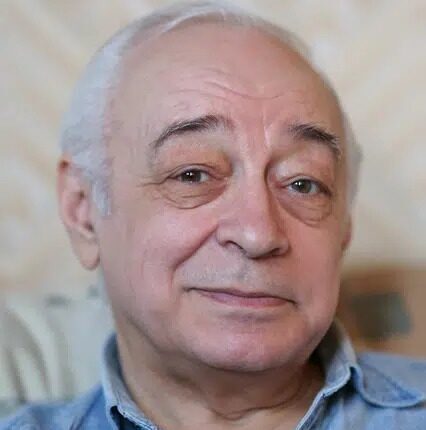
Recent Advances In Modeling Solar-Induced Melting Of Tibetan Lake Ice And Arctic Sea Ice
Abstract
The increase in the temperature of the Arctic Ocean over the past years has already been accompanied by an additional melting of sea ice during the polar summer. The change in the Arctic climate is accelerating due to positive feedback. As the ice melts, the Earth receives more solar heat due to the reduction in the reflection of solar radiation from the sea surface. This phenomenon attracts researchers to the problem of solar-induced melting of snow and ice. The processes accompanying the melting of sea ice are very complex. Therefore, it is natural to begin with an interesting problem of spring ice melting on mountain lakes, for which field observations are available. The large high-mountain lakes of Tibet are the most suitable objects for such work, since the sky above these lakes is usually clear and the lake ice is not covered with snow due to the strong wind.
The theoretical approach is based on a combination of solutions to two physical problems. Along with spectral radiative transfer in snow or ice with gas bubbles, heat transfer in a medium with volumetric absorption of solar radiation is calculated. The transient energy equation is accompanied by boundary conditions, which include the solar radiation in the opacity range, convective heat transfer, and radiative cooling in the mid-infrared window of the atmosphere. The solution takes into account the motion of the Sun across the sky and contains a description of the local melting/solidification of snow or ice. The computational results of ice melting on one of the Tibetan lakes are in good agreement with field observations. It has been confirmed that the ice on the lake melts from below due to deep absorption of solar radiation. The transition to the problem of sea ice melting is complicated by the need to account for the snow cover. A thin layer of snow only protects the ice from heating and melting. When the snow cover is sufficiently thick, the snow begins to melt and “melt ponds” form on the ice surface. The solar radiation absorbed by these ponds causes the ice to heat up and melt, starting from its upper surface. Approximate theoretical predictions agree well with the observed melting of sea ice. The paper includes a review of the literature on the geophysical problem being addressed. The work is expected to be of interest to many researchers.
KEYWORDS: Heat transfer, Solar radiation, Ice and snow, Lakes and sea, Melting, Climate
Short Bio
Leonid A. Dombrovsky is a highly regarded expert in radiative transfer in scattering media as applied to power engineering, geophysics, and biomedicine. He currently holds the position of Chief Researcher at the Joint Institute for High Temperatures in Moscow, Russia. Leonid Dombrovsky earned his PhD from MIPT in 1974, followed by a Doctor of Science degree in 1990. Prof. Dombrovsky has published over 350 research papers, as well as several books and book chapters. Notably, the monographs were published in New York in 1996, 2010, and 2023. In recognition of his achievements in the science and art of heat and mass transfer, Prof. Dombrovsky was awarded the prestigious A.V. Luikov Medal in 2016, followed by the William Begell Medal in 2018. The cooperation of Leonid Dombrovsky with his colleagues from Australia, Germany, France, Israel, Russia, Sweden, Switzerland, the UK, and the USA over the past 30 years has been a basis for enhancing the overall expertise and diversity of the physical models developed. As a result, advances have been achieved in a wide range of fields, encompassing heat transfer in rocket engines and solar thermochemical reactors, thermal processes in industrial nuclear reactors, microwave emission of foam on the ocean surface, radar remote sensing of atmospheric clouds, solar heating and melting of snow and ice, shielding of thermal radiation by evaporating or sublimating droplet and solid particle clouds, stabilization and control of levitating droplet clusters, airborne spreading of viruses, and infrared thermal treatment of human tumors.
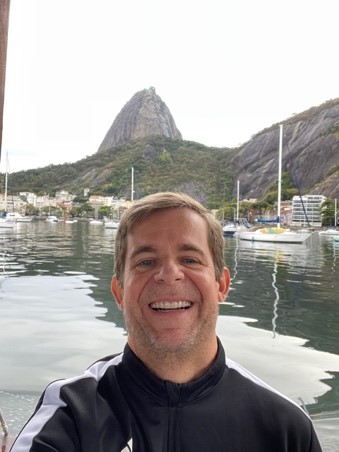
Inverse Problems And Optimization In Heat Transfer
Abstract
Inverse problems rely on estimating unknown quantities that cause a system’s response. In heat transfer problems, these quantities may include boundary and/or initial conditions, as well as the material’s thermophysical properties. The response is typically a temperature field that can be measured either intrusively or at the material’s boundaries. Inverse problems are mathematically classified as ill-posed, whereas standard heat transfer problems are well-posed. A solution to a well-posed problem must satisfy conditions of existence, uniqueness, and stability with respect to the input data. The existence of a solution to an inverse heat transfer problem can be proven through physical reasoning. However, the uniqueness of inverse problem solutions can be mathematically proven only in special cases. Additionally, inverse problems are sensitive to random errors in measured input data and require specialized techniques to satisfy the stability condition. Optimization problems, on the other hand, aim to obtain the optimal solution to a given problem based on a desired objective. In the context of heat transfer, for instance, optimization problems can determine the optimal magnetic field distribution to minimize natural convection effects during the solidification of an electrically conducting material. The solution to an optimization problem does not need to be unique; it only needs to satisfy the given objective. Many inverse problem techniques are formulated as minimization problems, for which optimization techniques are employed. Some classical deterministic techniques include the conjugate gradient method, the Levenberg-Marquardt method, and the BFGS method, among others. Other techniques, known as heuristics, include genetic algorithms, particle swarm optimization, and differential evolution methods, as well as many new ones that have emerged in recent years. Although optimization techniques are easy to use, they require significant computational effort to iteratively minimize the required cost function in complex problems. Some types of inverse problems can be reformulated as boundary problems. One technique that allows this is the Reciprocity Functional Method. In this case, the solution can be obtained analytically. Although the problem formulation becomes much more complex than with classical methods, the final expression is fully analytical, and solving the inverse problem takes a fraction of a second. Many applications of this technique have been developed in recent years, demonstrating its potential to rapidly solve inverse problems without any intrusive measurements. This paper addresses solution methodologies for inverse and single-objective optimization problems based on minimization techniques, as well as recent advances using the Reciprocity Functional Method and future prospects.
Short bio
Marcelo J. Colaço was born in 1974. He graduated with a degree in mechanical engineering from the Federal University of Rio de Janeiro (UFRJ) in 1996 and obtained his Ph.D. in mechanical engineering from UFRJ in 2001. He then worked as a postdoctoral researcher at the University of Texas from 2001 to 2002. He worked as an associate professor at the Military Institute of Engineering in Brazil from 2004 to 2009 and at UFRJ from 2009 to 2017. In 2017, he became a full professor at UFRJ. Prof. Colaço also worked as a visiting professor at Florida International University (USA) in different periods from 2006 to 2018 and at the University of Parma (Italy), once a year, from 2020 to 2025. His research, both numerical and experimental, focuses mainly on thermodynamics and fluid mechanics. He has developed optimization techniques, algorithms, and solution methods for inverse heat transfer problems and has published numerous scientific articles in peer-reviewed journals and at international conferences. Since 2012, he has been a member of the Scientific Council of the International Center for Heat and Mass Transfer in Turkey. Since 2023, he has been the Brazilian delegate in the Assembly for the International Heat and Mass Transfer Conferences. Prof. Colaço’s international contacts include researchers in the USA, Portugal, France, Italy, and the UK, among others. Prof. Colaço has also conducted many applied research activities with industry, primarily in the oil and gas sector.
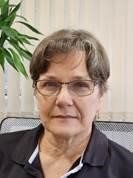
Advances in Heat Pipe Technology for Electronic Cooling
Abstract
The increasing thermal demands of compact electronic systems have highlighted the need for efficient and reliable passive heat dissipation technologies. Flat plate heat pipes (FPHPs), due to their compactness, high heat transport capacity, and adaptability, represent a promising solution for managing localized heat loads in devices such as tablets, laptops, CPUs, and aerospace electronics. This paper explores experimental data on the thermal performance of FPHPs with distinct internal configurations, all manufactured via diffusion bonding, a technique that ensures high-precision assembly and structural integrity. Ten configurations were investigated: wire and plate, sintered copper powder, metal mesh, hybrid wick, thermosyphon, pulsating heat pipe (PHP), loop heat pipe (LHP) and another reduced thickness (<1.6 mm) LHP, and two novel structures: a capillary wick made from twisted metallic wires (0.1 mm diameter, commercial electrical wire), and a PHP with a unique wire-based channel geometry. Except for the reduced-thickness LHP (<1.6 mm), all prototypes shared identical external dimensions (100 × 55 mm²), enabling direct performance comparisons under controlled heat input conditions. Deionized and distilled water was used as the working fluid at varying filling ratios. Simple yet precise thermal resistance network models for steady-state operation are presented and compared with experimental data for selected devices. Results show that internal structure, closely tied to the device technology, strongly influences startup behavior, overall thermal resistance, and temperature uniformity. LHPs demonstrated excellent thermal performance even at minimal thickness, making them suitable for space-constrained applications such as smartphones. The twisted-wire wick provided effective heat spreading with simple and low-cost fabrication. The novel wire-based PHP showed stable oscillatory behavior and efficient thermal response. This study contributes to the state of the art in three key ways: (i) it presents an application map linking FPHP configurations to thermal and spatial requirements; (ii) it introduces two innovative and easily manufacturable capillary structures; and (iii) it demonstrates the feasibility of ultra-thin LHPs built via diffusion bonding. The complementary use of sintering was also validated without compromising device efficiency. By combining design diversity with manufacturing precision, this work offers a comparative framework to optimize FPHP selection in advanced electronic systems, providing practical guidance for engineers and researchers developing compact thermal management solutions, particularly for high-performance and embedded electronics where space and efficiency are critical.
Short bio
Marcia H. Mantelli received her Ph.D. in Mechanical Engineering from the University of Waterloo, Canada, in 1995. She worked at INPE (Brazilian National Institute for Space Research) from 1983 to 1998, where she developed thermal control systems for spacecraft. In 1999, she joined the Federal University of Santa Catarina (UFSC), Brazil, as a professor in the Department of Mechanical Engineering. There, she established a heat pipe laboratory focused on space applications, which has since expanded to provide thermal solutions for a wide range of industries. She has received several research grants from major Brazilian industries, and under her coordination, a 2000 m² laboratory building dedicated to research in heat pipe technologies was constructed. As a result of her long-standing cooperation with industry, she holds more than ten patents and has authored or co-authored over 300 scientific publications, including more than 100 articles in major international journals. In 2021, she published the book Thermosyphons and Heat Pipes: Theory and Applications (Springer Nature), as sole author. She has supervised over 30 doctoral theses and more than 60 master’s dissertations. Her work has earned her 18 awards, including Claudia Magazine’s Best Woman Scientist in Brazil in 2012, and the “Women in Highlight” award from CREA in 2015. Currently, she serves as Chairperson of the Committee on International Heat Pipe Conferences and Symposia. She is a member of the National Academy of Engineering (ANE) in Brazil. She is an Associate Fellow and Associate Editor of the AIAA International Journal of Thermophysics and Heat Transfer, as well as an Editor for Elsevier’s International Communications in Heat and Mass Transfer. She also serves as reviewer for over fifteen leading international journals in her research field. In 2014, she recorded a TEDx Talk and is frequently invited to participate in round tables and give talks on the contributions and participation of women in engineering.
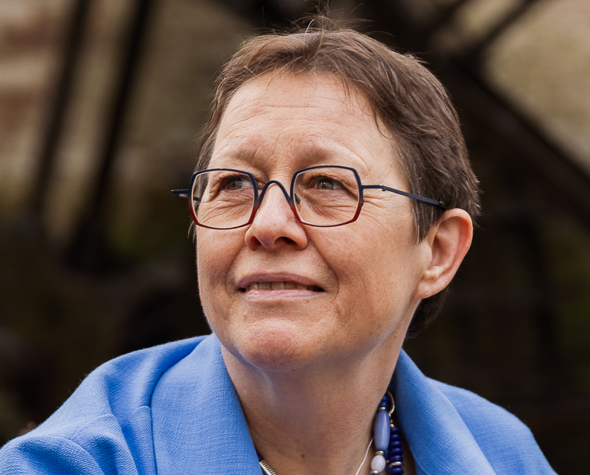
Generative design of heat sinks and heat exchangers: advancements in topology and shape optimization
Abstract
Driven by the increased possibilities in manufacturing techniques, advanced computer generated designs, or so-called generative designs, are more and more becoming both seminal and attractive to enhance the performance of heat exchanging components. Adjoint-based optimization methods, such as topology and shape optimization, have well been established to this end. However, their application is still hampered by their high computational cost and the related numerical challenges of full scale device optimization. Particular challenges include conjugate heat transfer problems and devices operating under higher flow rates, eventually entering transitional or turbulent flow regimes.
Therefore, the success of generative designs at present still heavily relies on concise decisions in the optimization process; the choice of model approximations, grid resolution, optimization method, the way to account for manufacturability, robustness of the design, and validation of the generative design outcome are all crucial steps towards improvement.
In this contribution, the state-of-the-art of topology and shape optimization in heat sinks and heat exchangers will be reviewed. Special focus wil be put on the trade-off between computational cost and modeling accuracy, and how to exploit physics-based model reduction in the optimization. Furthermore, the different approaches to account for manufacturing and operational constraints (e.g. to prevent fouling) will be elaborated. Finally, a verification and validation of the generated designs will be presented.
Short Bio
MARTINE BAELMANS is Professor at the Department of Mechanical Engineering at the KU Leuven in Belgium, where she leads the group on thermal-fluid engineering since 1996. She graduated from the same university and obtained her PhD in Engineering in 1993. In 1993-1994 she was a post-doctoral researcher at KU Leuven in collaboration with Forschungszentrum Jülich (Germany). From 1994-1996 she was post-doc in the framework of an EC Individual Research Training Fellowship at Forschungszentrum Jülich (Germany).
Martine Baelmans has authored or co-authored more than 400 papers in applications in plasma physics, fluid mechanics, and heat transfer. Research topics are presently focusing on automated optimization in thermal design. Starting from dedicated component and system models, parameters, shapes and topologies are improved. Applications range from liquid and two-phase microelectronics cooling over thermal management in power electronics, power transformers to nuclear fusion divertor design. Her group on thermal-fluid engineering hosts at present 4 post-docs, and 9 PhD students.
Martine Baelmans is member of the Royal Belgian Academy of Sciences (KVAB) and Member of several Boards of Governors. https://www.mech.kuleuven.be/en/tme/research/thermal/home
Publications: http://lirias.kuleuven.be/cv?Username=U0004531
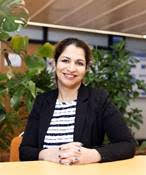
Thermochemical Energy Storage for the Heat Transition: Advancing Heat Storage and Upgrade Solutions
Abstract
Thermal Energy Storage (TES), often referred to as a “heat battery”, is a cornerstone technology for industrial decarbonization. It enables flexible use of renewable electricity for heat production, helps shift demand to off-peak hours, and facilitates recovery of industrial waste heat—an untapped resource equivalent to approximately 25% of Europe’s residential heating demand. Among TES technologies, Thermochemical Energy Storage (TCES) stands out due to its superior energy density, minimal thermal losses, and potential for long-duration storage. TCES systems use reversible solid–gas reactions in thermochemical materials (TCMs), storing heat during endothermic reactions and releasing it during exothermic reactions, with temperature flexibility determined by reactor vapor pressure.
Despite promising lab-scale performance, scaling TCES for industrial applications presents critical challenges. One key limitation is the decline in system efficiency over repeated charge–discharge cycles, often driven by the formation of preferential gas flow paths that reduce effective contact between the gas and solid phases. These changes result in slower reaction kinetics, impaired mass transfer, and decreased thermal output.
This presentation will share recent findings on how these mechanisms affect long-term TCES performance, supported by experimental data and physical modeling. It will also explore potential strategies for mitigating these effects, ranging from material and reactor design improvements to operational optimization. Finally, future directions will be outlined, emphasizing the role of multi-scale modeling, and advanced characterization techniques in overcoming current limitations and accelerating the industrial deployment of TCES technologies.
Short Bio
Mina Shahi is an (adjunct) Professor at the University of Twente, where she holds the Research Chair in Thermal Conversion and Storage within the Department of Thermal and Fluid Engineering. Her work focuses on clean and efficient cooling and heating solutions for both domestic and industrial applications. She has led numerous interdisciplinary projects at national and international levels, advancing the field through a unique integration of multiscale modeling and experimental validation .
Professor Shahi’s research has made key contributions to the development of compact energy conversion and storage systems, particularly in areas such as magnetocaloric systems, phase change materials, and thermochemical energy storage . In addition to her academic roles, she serves in scientific and advisory capacities across several international organizations and associations.
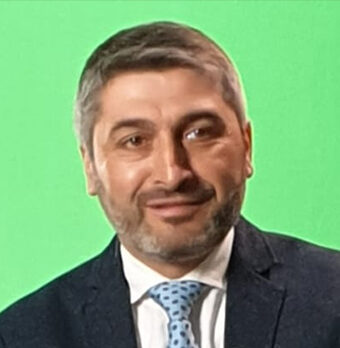
Generative design to overcome challenges and shape the future of heat transfer design
Abstract
Heat transfer challenges span a wide range of scales, from microscale thermal management in electronics to large-scale systems like building envelopes and thermal energy storage for renewable energy. Addressing these challenges effectively necessitates a shift in design paradigms. Generative design approaches, and particularly Topology Optimization (TO), have emerged as powerful tools in thermal system design. When combined with advanced manufacturing methods such as Additive Manufacturing (AM) and CNC milling, TO enables unprecedented geometric freedom and significant performance enhancements.
Inspired by nature laws via bio-based approaches, say accounting for the evolutionary tendency of finite systems to enhance their flow efficiency like in the well-known Constructal law, generatively designed components mimic nature free-form, generating optimized structures. However, unlike biological systems that evolve over both space and time, engineered systems rely on computational and fabrication tools to achieve similar advancements. Within this context, together with topology-optimized structures where the structures are not known a-priori, several strategies allow to generate efficient heat transfer structures, ranging from predefined cellular or lattice architectures, e.g., body-centered cubic arrays, honeycombs, or triply periodic minimal surfaces (TPMS), to more advanced, optimization-driven TO based approaches. Lattice-based structures are relatively straightforward to implement and can be personalized to meet specific thermal requirements. At a more advanced level, TO enables the systematic derivation of high-performance designs by maximizing or minimizing objective functions, e.g., thermal resistance, under constraints like mass, volume, or pumping power. The integration of TO with computational fluid dynamics (CFD), and the ability of AM and CNC milling to fabricate intricate geometries, is paving the way for next-generation thermal devices with enhanced heat dissipation and overall thermal performance. Nonetheless, significant challenges remain. TO and cellular design approaches are computationally intensive, often constrained by manufacturability limits, and currently lack seamless integration with novel materials.
Addressing these limitations is crucial to fully exploiting the capability of these technologies. This keynote will explore the current state and future directions in optimized thermal system design, including developments in heat sinks, heat exchangers, and multifunctional thermal structures. Emphasis will be placed on how recent advances in computational design and lifecycle-aware optimization strategies can improve not only thermal efficiency but also practical implementation.
Finally, the keynote will highlight emerging trends that aim to extend beyond conventional TO, e.g., the embedding of cellular topologies, multi-scale optimization strategies, and the promising ground of field optimization, which seeks to directly design spatial property distributions based on underlying physical laws.
Short Bio
Nicola Bianco graduated with a Master’s Degree in Mechanical Engineering from the Università di Napoli Federico II, Italy, in 1995 and obtained his PhD in Thermomechanical Engineering from the same University in 1999. He joined the faculty of the Università di Napoli Federico II in 2001, first as a Research Assistant, then as an Associate Professor (since 2005), and later as a Full Professor (since 2019) of Engineering Thermodynamics and Heat Transfer. He is the Head of the Department of Industrial Engineering of the Università di Napoli Federico II since 2021.
His research fields, by means of analytical, numerical and experimental techniques, are natural and mixed convection in channels and open ended cavities, heat conduction in solids with a moving heat source above, combined radiation-conduction effects in multilayer thin films irradiated by stationary or moving laser sources, thermo-energetic analysis and design of solar systems, heat transfer in automotive. Recently his research interests have focused in energy saving in buildings, heat transfer in porous media, phase change materials for thermal energy storage and topology optimization of heat transfer components.
He has authored or co-authored over 300 scientific papers, most of which have been published in peer-reviewed journals or presented at international refereed conferences. His current bibliometric indexes are: h-index 47, number of citations 7400 (Source: Scopus).
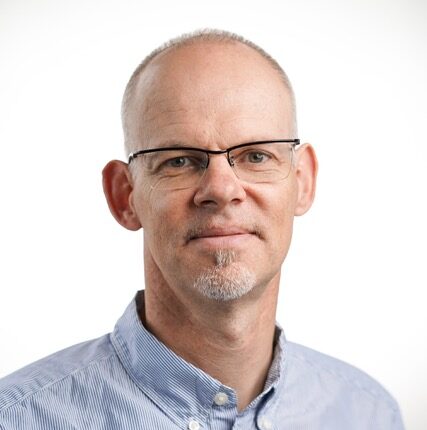
Heat and Mass Transfer Characteristics of Coaxial Round Jets
Abstract
Jet flows have been extensively studied because of their relevance in industrial processes such as high thermal load cooling and combus on, while also serving as canonical flow configura ons for exploring fundamental heat transfer and mixing mechanisms. Among the various configurations, a coaxial round jet offers versa lity and enhanced performance over single jets. This keynote focuses on the near-field dynamics of isothermal coaxial round jets (two concentric, non-swirling jets of the same-density fluid) and their implications for heat and mass transfer. The talk starts with a brief overview of research on coaxial jets. Redistribu on of the total mass flow by adjusting the velocity ratio between the outer and inner jets (ru=Uo/Ui), significantly affects the development of shear and wake instabilities, which govern the formation of coherent vortices. By fine-tuning ru, these instabilities can be manipulated to opmize transport characteristics at a given mass flow rate. Recent particle image velocimetry (PIV) results will be presented to illustrate how varying ru alters the near-field vortex structure and flow topology. Two studies are discussed (i) on convective heat transfer characteristics of pulsating impinging coaxial jet flows, and (ii) on fiber dispersion in steady coaxial jet flows. In the first study, an in-house designed ultra-thin (400nm), Joule heated surface enabled the measurement of temporally and spa ally changing temperature fields up to pulsa on frequencies of 200Hz using high-speed thermography. Results indicated that steady, non pulsating coaxial jet operation yielded the highest overall heat transfer at ru=2. Further enhancement of the heat transfer coefficient was achieved across all ru by applying pulsation within a narrow frequency band to the weaker of the two coaxial jets. The second study examined the translational and rotational motion of non-spherical, nylon fibers (1.5 mm) exiting from the inner jet and interacting with the inner shear layer in the near-field of the coaxial jet. By changing ru, the inertial response of the fibers is modified and by resolving both the instantaneous flow field and fiber trajectories, instantaneous translational and rotational slip velocities were measured allowing for a detailed analysis of single fiber interaction with the near-field coherent vortices. This keynote concludes with a discussion of future research directions and challenges in leveraging coaxial jet dynamics for thermal and mass transport.
Short Bio
Professor René van Hout is a Full Professor in the Faculty of Mechanical Engineering at the Technion – Israel Institute of Technology in Haifa, Israel. He holds a Ph.D. in Fluid Mechanics and Heat Transfer from Tel-Aviv University and an M.Sc. in Mechanical Engineering from Eindhoven University of Technology, the Netherlands. With over two decades of academic and research experience, Professor van Hout has developed a distinguished career in experimental fluid mechanics and heat transfer. His research spans a wide range of topics including canopy boundary layers, particle-turbulence interactions, atmospheric particle dispersal, jet flows, fluid-structure interactions, and heat transfer enhancement in impinging, pulsating (coaxial) jets. His work is known for its innovative use of advanced experimental techniques such as tomographic PIV/PTV and digital holography.
Professor van Hout has led and co-led numerous competitive research grants from agencies including the Israel Science Foundation, the US-Israel Binational Science Foundation, and the PAZY Foundation, among others. His scholarly output includes more than 55 refereed journal articles and several book chapters. Notably, he received the “Best Paper Award” in Fluids (2021) for his review on coaxial circular jets and was awarded the prestigious “Ray and Miriam Klein Foundation” research prize in 2022.
An active member of the international heat transfer and fluid mechanics community, he has delivered keynote and invited lectures at major conferences including IUTAM symposia and Multiphase Flow Congresses. He has also served on scientific committees of major international conferences, such as the International Conference on Multiphase Flow, and recently chaired the EUROMECH Colloquium 652 on non-spherical particles in turbulence.
In addition to his research accomplishments, Professor van Hout is deeply involved in education and mentoring. He has supervised over 30 graduate students and developed multiple undergraduate and graduate-level courses in heat transfer and fluid mechanics at the Technion. He currently heads the Center of Research Facilities within his faculty, promoting cutting-edge experimental research capabilities.
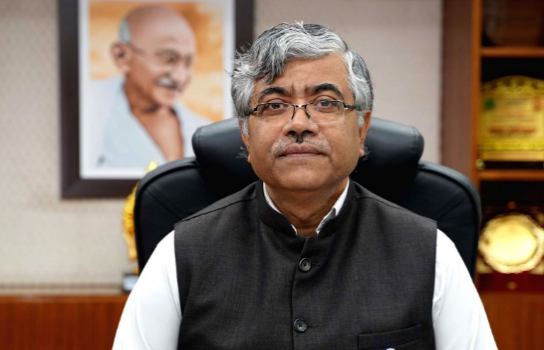
Gradient Bio-Microfluidics: Thermo-Chemical Transport in Organs on a Chip Models
Abstract
Gradients of chemical and physical parameters such as oxygen, nutrients, pH, temperature, and shear stress are fundamental regulators of cellular function and tissue homeostasis in the human body. These physiochemical gradients are inherently dynamic, shaped by diffusion, convection, organ architecture, and metabolic activity and they evolve continuously in response to changing biological conditions. The dynamic nature of chemical and thermal gradients are caused and controlled by transport phenomena related to heat and species diffusion and convection. During pathological events such as ischemia, inflammation, infection, fibrosis, and cancer metastasis, these gradients are often disrupted, leading to altered cell signalling, phenotype, and viability. Clinical interventions, including surgery, drug administration, or implant insertion, can further modify these gradients by imposing abrupt or sustained microenvironmental changes. Understanding how cells respond to such dynamic and heterogeneous gradients is critical for modelling physiology, disease progression, and therapeutic outcomes. Organ-on-a-Chip platforms offer a powerful microfluidic framework to engineer, impose, and control these gradients with high spatial and temporal resolution. Unlike conventional static cultures, these systems allow the application of well-defined imposed gradients (whether stepwise, linear, or dynamic) of oxygen tension, metabolite/drug concentration, shear, or thermal stress. Through vascular-like perfusion, tissue-specific interfaces, and micro-compartmentalization, Organ-on-a-Chip models can mimic complex physiological gradients across critical organ barriers such as the intestinal wall, renal nephrons, or cardiac tissue. This keynote explores the role of imposed gradients in intestine, cardiac and kidney functions using organ-on-a-chip models to decode transport phenomena and cellular behaviour under both healthy and disease-mimicking conditions. In intestine models, both individual and interplay of chemical and thermal gradients are used to investigate bacterial taxis, offering insights into microbiome and infection dynamics. In cardiac-on-a-chip models, gradients of oxygen are engineered to simulate ischemia and reperfusion, enabling analysis of calcium signalling, and mitochondrial stress. Similarly, Kidney-on-a-Chip platforms use hydrostatic pressure, tissue stiffness and solute gradients to replicate nephron-level functions and assess filtration, reabsorption, and drug-induced nephrotoxicity. Shear stress gradients are also investigated to understand their influence on cancer cell proliferation under drug exposure where metastasis paradoxically increases post-chemotherapy. Overall, this talk will provide a cross-disciplinary perspective, rooted in heat and mass transfer principles on how advanced microfluidic engineering can be leveraged to replicate the complexity of gut, inter organ cancer metastasis, cardiac and renal physiology on-chip. We envision these platforms as testbeds to unravel organ-specific thermo-chemical phenomena that will drive the next generation of in vitro diagnostics, therapeutics, and treatment strategies.
Keywords: Gradients, Organ-on-a-Chip, Heart, Kidney, Intestine, Chemical, Thermal, Shear Stress
Short Bio
Professor Sarit K. Das is an Institute Professor at the Indian Institute of Technology Madras, Chennai. He is the first occupant of the V. Balakrishnan Chair Professorship. He is the former Director (President) of the Indian Institute of Technology Ropar. He is also the former Dean (Academic Research) of IIT Madras.
Prof. Das studied at the Jadavpur University, NIT Rourkela and the Helmut Schmidt University of Hamburg, Germany. His research group works on various aspects of thermo -fluids sciences like heat and mass transfer in industrial equipment such as heat exchangers and fuel cells, multiphase flow and energy conversion. Water management in PEM fuel cells and thermal management of battery stack are the two active areas in this direction. He also works on cooling technology for electronic material processing using novel eutectic binary mixture of organic fluids. The group also works on thermal desalination techniques such as HDH (Humidification and Dehumidification) technique. The group is known for works on Micro-Nano scale processes and is known to be one of the leading groups on fundamentals and applications of Nanofluids in the world. Another area of major focus of the group is bio-microfluidics, which are specifically conceptualized to mimic human physiological conditions through novel organ-on-chip platforms. The focus is to use this for medical diagnostics, effective drug delivery and understanding the role of chemical and thermal gradients on physiological and pathological states related to cardiovascular diseases, renal failures and cancer metastasis.
Prof. Das is a Fellow of the National Academy of Sciences India (NASI) and the Indian National Academy of Engineering (INAE). Recently, he has been selected a fellow of the Asian Union of Thermal Sciences and Engineering (AUTSE). He was a Peabody Visiting Professor at MIT, Cambridge and a visiting Professor – Lund University, Sweden. He was conferred the prestigious India Citation Awards 2012 by Thomson Reuters. He is the first recipient of the KNS research award given by the Indian Society for Heat and Mass Transfer (ISHMT). He was a fellow of the Alexander von Humdoldt foundation in 2000-01. He has published more than 350 research articles and six books.
Prof. Das is a member of the editorial boards of Heat Transfer Engineering, Taylor & Francis Publishers, former Editor in Chief of International Journal of Micro-Nano Scale Transport and Former Member of the Editorial Board for the International Journal of Heat Exchangers. Visit https://home.iitm.ac.in/skdas/index.html for more information.
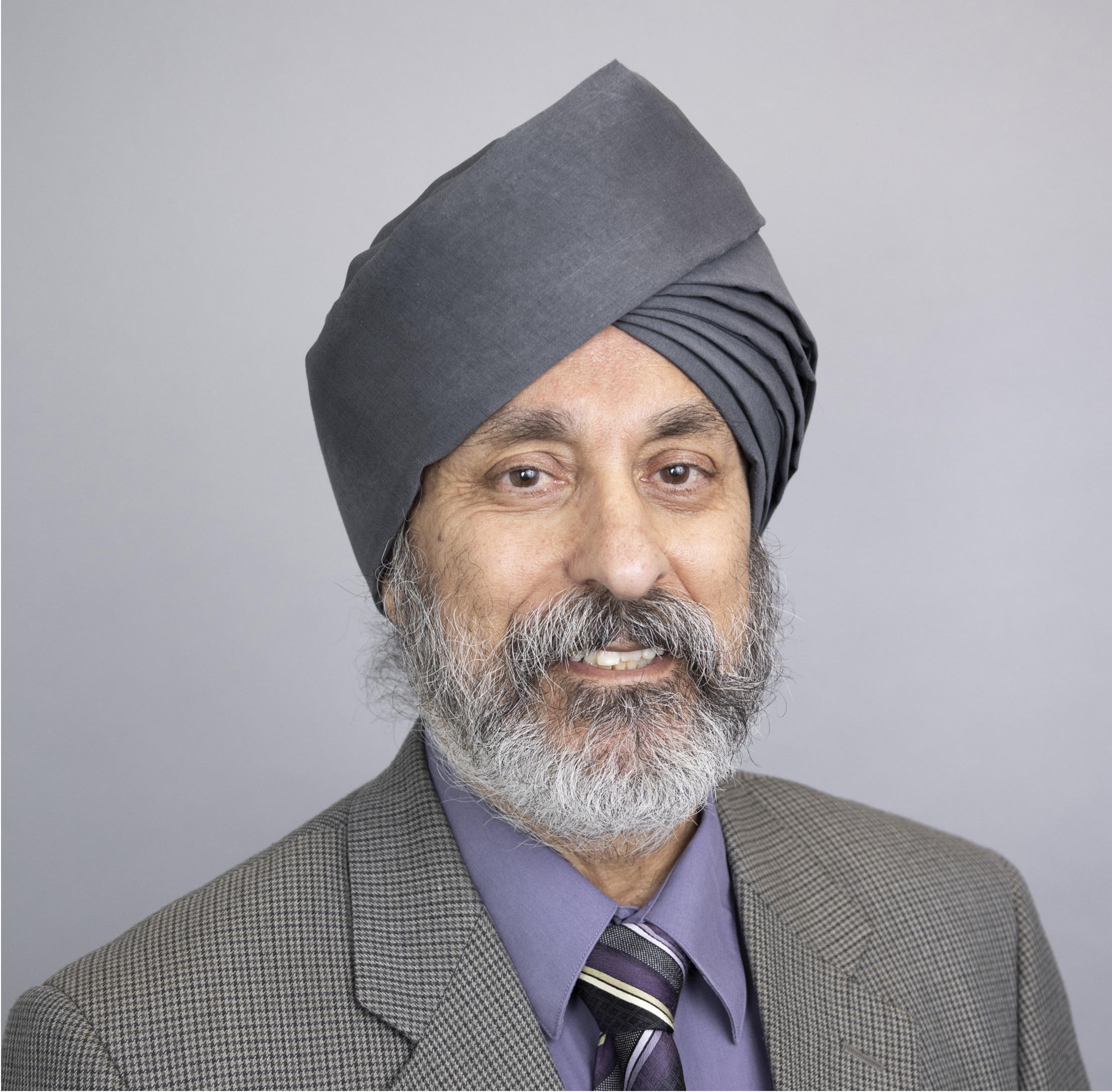
Measurements of biotransport properties of ocular tissue for drug delivery modeling.
Abstract
The biophysical properties of various ocular tissue are fundamentally important parameters for predictive modeling of ocular drug delivery. In this regard, since the vitreous humor has the largest volume of a single tissue in the eyeball, it has been the focus of attention of many researchers over the last several decades. While various measurement techniques have been developed, the accuracy of measurements in biological systems is always a challenge. Among the methods include imaging techniques (fluorescence and MRI) that consist of injecting a contrast agent or a labeled drug bolus into the vitreous and tracking the contours of its advancement in time. The 3-D MRI visualization provides a clear snapshot of the diffusion contours in the vitreous humor, and a combination of analytical and numerical solutions provides an accurate quantitative tool for the measurement of the diffusion coefficient. The measurement is set up as na inverse problem whereby a predictive model for the same initial conditions is matched with the experimental measurements while floating the diffusion coefficient value which is delivered through a least-squares best fit. This technique referred to as the ‘contour method’ has led to results for various molecules ranging in size from approximately 0.1 to 160 kDa. For excised bovine eyes with drug surrogates such as Gd-DTPA, Prohance, galbumin and immunoglobulin G, an accuracy of about 10% has been achieved while in the case of live rabbits using fluorescein labeled Bevacizumab, it is about 30%. In the case of real drugs, the success of this technique depends on the effective labeling of the drugs with suitable contrast agents such as fluorescein and gadolinium or manganese to facilitate fluorescence or MR imaging. As expected, the diffusion coefficient values for the different molecules show an inverse relationship with the molecular mass of the surrogate, with some effects due to the net charge on the molecule. Among other techniques, experimental investigations have been conducted with the use of a diffusion apparatus for measuring permeation of a drug across an excised vitreous body from a donor chamber to the receptor while sampling assays from the chambers at various time intervals. This method has the advantage of not requiring labeling but is otherwise more disruptive to the vitreous. The results from the various methods over the last 40 years have been catalogued and correlations for the diffusion coefficient as a function of molecular mass have been developed.
Short Bio
Professor Sadhal received his PhD at Caltech in Engineering Science in 1978. He is a Professor of Aerospace & Mechanical Engineering and Ophthalmology at USC. He is the lead author of the book, “Transport Phenomena with Drops and Bubbles.” He has worked on NASA projects involving containerless processing using acoustic levitation techniques, and has also made fundamental contributions to nonlinear acoustics, particularly streaming phenomenon with liquid drops. His technical contributions include a large body of scientific literature on fluid, thermal and material transport. He is a Fellow of ASME and the recipient of the 2007 James H. Potter Gold Medal as well as the 2019 Heat Transfer Memorial Award. In addition, he was awarded the 2024 Donald Q. Kern Award for seminal and transformative contributions in physicochemical hydrodynamics and transport phenomena with multiphase systems. In 2025 he received the Outstanding Engineering Educator Award from the Engineers’ Council. His current activity includes ocular fluid dynamics and transport associated with drug delivery, transport and permeability properties of the vitreous humor and retina.
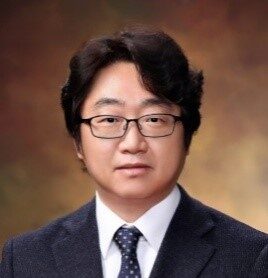
Time-Invariant Nature of Ultra-Thin Liquid Films in Evaporating Droplets: Insights from Surface Plasmon Resonance (SPR) Imaging
Abstract
Thin liquid films are observed in the contact line region of sessile droplets, which can be divided into three distinct domains, including the bulk meniscus, the evaporating thin film (ETF), and the non-evaporating adsorbed film. Specifically, the nanoscale ETFs, which are substantially affected by disjoining pressure, capillary pressure, and interfacial evaporation, play a critical role in heat dissipation due to the significantly enhanced evaporation flux near the contact line region in evaporating droplets. Despite its fundamental importance in interfacial evaporation dynamics, direct experimental characterization of the ETF has remained a significant challenge, resulting in a limited understanding of its temporal evolution. This presentation demonstrates the time-invariant nature of ETF profiles during the pinning stage of droplet evaporation, providing novel insights into interfacial evaporation mechanisms using the surface plasmon resonance (SPR) imaging. Meanwhile, surface Plasmon Resonance (SPR) is a highly sensitive optical phenomenon that occurs at the interface between a metal and a dielectric medium. It enables precise detection of refractive index changes near the metal surface, making it a powerful tool in biosensing, materials science, and interfacial studies. Based on this principle, SPR imaging provides a real-time visualization method for analyzing interfacial phenomena at the nanoscale, and it is thus expected to provide a novel approach for investigating complex interfacial behaviors during phase change such as evaporation, condensation, and frosting. In the present study, ultra-thin liquid films are visualized using SPR imaging to directly measure the ETF profiles during evaporation for different surface wettability through a self-assembled monolayer (SAM) on a gold substrate. A theoretical model incorporating kinetic theory and the augmented Young-Laplace equation is employed to quantitatively examine the finite evaporation flux in the ETF region. The findings reveal that the ETF profile remains time-invariant during the pinned stage, exhibiting local equilibrium characteristics, and theoretical predictions show good agreement with experimental observations. It is also demonstrated that surface wettability has a minor influence on variations in ETF profiles, and the disjoining pressure is found to be higher on hydrophilic substrates, which contributes to further thinning of the ETF. Furthermore, these findings suggest that higher surface wettability enhances ETF thinning, improving heat dissipation through maximum evaporation flux.
Short Bio
Dr. Seong Hyuk Lee is a Professor in the Department of Mechanical Engineering at Chung-Ang University (CAU), South Korea. He received his B.S., M.S., and Ph.D. degrees in Mechanical Engineering from Chung-Ang University in 1992, 1995, and 1999, respectively. In 2001, he joined Professor Joon Sik Lee’s research group at Seoul National University, where he explored micro-scale thermal physics for three years. He returned to CAU as a faculty member in 2004 and was promoted to full professor in 2013. Professor Lee’s research has primarily focused on phase-change heat transfer phenomena, including evaporation, condensation, and frosting. He has made significant contributions to near-field visualization using surface plasmon resonance (SPR) imaging that enables high-resolution observation of interfacial phenomena. His research group has conducted multi-scale and multi-physics simulations of nanoscale diffusive-ballistic energy transport in thin metal films to enhance in-plane energy transport. Moreover, Dr. Lee has led numerous applied research projects across various industrial domains, including solid oxide fuel cells (SOFCs), energy storage systems (ESS) modules, hydrogen storage technologies, and gas detection systems. More recently, he has been actively involved in the development of advanced cold plates and an integrated simulation platform for data centers, as well as system-level thermal design of server-rack cooling systems. Currently, he serves as President of the Thermal Engineering Division of the Korean Society of Mechanical Engineers (KSME-TED) and Vice President of the Society of Air-Conditioning and Refrigerating Engineers of Korea (SAREK).
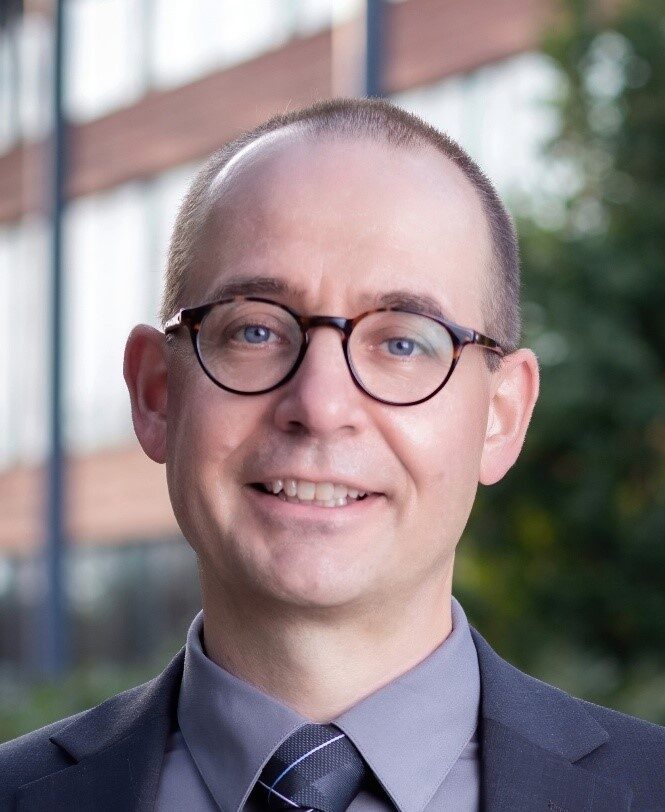
Measurement and improvement of air-side and refrigerant-side heat transfer in high-performance heat exchangers
Abstract
By utilizing the analogy between heat and mass transfer, local air-side heat transfer coefficients (HTCs) can be measured with a sorption-based technique in which a tracer gas reacts with a special thin film coating applied to the heat transfer surface of interest. The resulting color change is recorded visually and linked to the local mass transfer. The accuracy of this sorption-based experimental method has been validated on external flow across a flat plate which shows good agreement compared to the analytical solution. With this method, it is now possible to accurately quantify local HTCs of real-scale heat exchanger fins. The averaged HTCs and pressure drops of the three fin-and-tube arrays in the current study agree well with data from other researchers who have measured entire heat exchangers with similar fin geometries. In addition, the degradation of the HTCs with increasing row numbers of the three fin types has been quantified. It can be utilized to generate better HTC correlations for heat exchangers and to recognize opportunities for improvement. Experimental results are also compared to CFD results to assess where good agreement can been reached and for which geometries the CFD results deviate to a larger degree. Additional findings from a recent study to design an alternative coating formulation are also presented. Potential future research directions for air-side investigations include cases with dehumidification and frosting. Potential tube-side applications to quantify local refrigerant-side HTCs are also discussed.
In the second part of the paper, improvements of heat transfer on the refrigerant-side of heat exchangers are discussed with an emphasis on reducing refrigerant dry-out effects. In one example, the performance degrading effects of two-phase flow mal-distribution are reduced by utilizing an overfeed system that is powered by expansion work recovered by an ejector. The experiments were conducted with ammonia, but the improvements can be achieved with other fluids as well, as the mechanism effectively eliminates refrigerant dry-out without requiring additional external power input. In another study using CO2, it was found that higher oil circulation rates cause a flow regime transition in which foaming flow was able to reliable wet the top surface of a horizontal 7.9mm round tube. While pressure drop increased as expected, the resulting heat transfer improvements were substantial compared to the cases with low or no oil circulation.
Short Bio
Stefan Elbel is a professor at Technische Universität Berlin, Germany, in the Institute of Energy Engineering. His research is focused on sustainable heating and cooling technologies predominantly with natural refrigerants. Prior to joining TU Berlin in 2023, he was on the faculty of the University of Illinois at Urbana-Champaign and served as Co-Director of the Air Conditioning and Refrigeration Center as well as CEO of Creative Thermal Solutions, Inc. an independent R&D lab located in Urbana, IL.
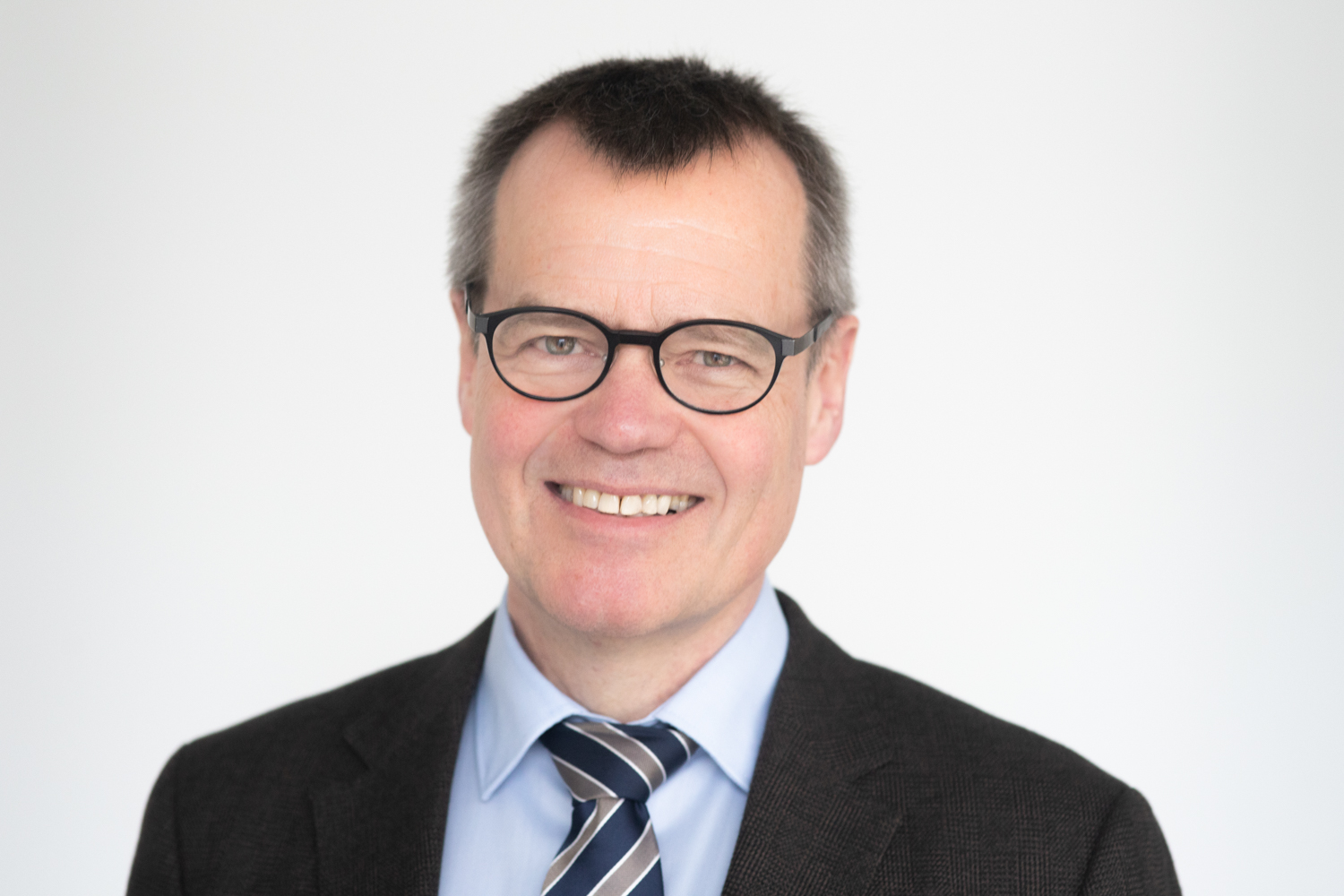
Electrifying distillation processes through mechanical vapor recompression: from potential analysis to conceptional equipment design
Abstract
Thermal separation operations, like evaporation, distillation, rectification, drying or ab- and desorption, in downstream processing stand for roughly 3 % of the global primary energy demand as well as the associated CO 2 -emissions (Jana, 2014; Kiss, 2014). Heat integration technologies, such as the Pinch Technology, have allowed to reduce external energy demand through the match of process internal heat sinks and heat sources (Linnhoff, 1993). On its way to further reduce direct and indirect carbon emissions, the process industry relies on an increased use of renewable electrical energy in its production processes. Closed loop as well as open loop heat pump systems allow to upgrade thermal energy to a higher supply level such that it may serve as valuable heat source. In the processing of aqueous systems, such as seawater desalination or the concentration of aqueous extracts, mechanical vapor recompression (MVR) has proven its ability to satisfy thermal energy demand by utilizing electrical energy. However, MVR technology has not yet found broad application for typical, frequently non-aqueous component systems in the process industries.
This contribution presents a comprehensive approach to promote the use of MVR technology in the context of chemical production processes. The work focuses on distillation and rectification processes as these represent roughly half of the thermal energy demand in typical thermal downstream separations. The identification of favorable process constellations, the quantification of the CO 2 -reduction potential and the conceptual process and equipment design are key steps in the assessment of the technical feasibility, economic profitability and ecological beneficiality of an MVR solution. Based on generic process constellations with close- and wide-boiling component systems, a typical workflow has been elaborated for the conceptual equipment design of compressor and heat exchanger combinations supporting the evaluation of MVR assisted distillation systems. The approach integrates a preliminary potential analysis, vapor recompression as well as heat transfer technology to identify technically feasible measures for further ecological and economic assessment. The presentation will elaborate on the approach, present typical results and give an outlook on potential next steps.
Literature
A. K. Jana, Energy Conv. Manage. 2014, 77, 287–297, DOI: 10.1016/j.enconman.2013.09.055.
A. A. Kiss, J. Chem. Tech. Biotech. 2014, 89, 479–498, DOI: 10.1002/jctb.4262.
B. Linnhoff, Trans. Inst. Chem. Eng. 1993, 71(A), 503-522.
Short Bio
Stephan Scholl studied Mechanical Engineering with a specialization in Process Engineering at TU Munich from 1979 to 1985 followed by his Dr.-Ing. degree under the supervision of Prof. Alfons Mersmann from 1985 to 1991. From 1991 to 2002 he worked with BASF SE, Ludwigshafen/Germany in different positions, in his final position as Group Leader in Engineering R&D, with responsibility for teams on Physical Properties and Phase Equilibria, Absorption/Gas Scrubbing and Extraction/Phase Separation. 2002 he joined Technische Universität Braunschweig as Full Professor for Chemical and Thermal Process Engineering and Managing Director of the respective Institute. His main research areas are Fouling and Cleaning, Equipment Technologies for Heat and Mass Transfer, Technologies for API and Renewable Resources as well as Circularity of Plastics. He has successfully supervised over 40 Dr.-Ing. graduates. Stephan Scholl serves as elected member in the national working parties on Adsorption, Fluid Process Engineering as well as Heat and Mass Transfer, leading the latter as elected chairman since 2018. He is co-author of more than 180 scientific publications and was awarded the ProcessNet Emil-Kirschbaum Medal in 2022.
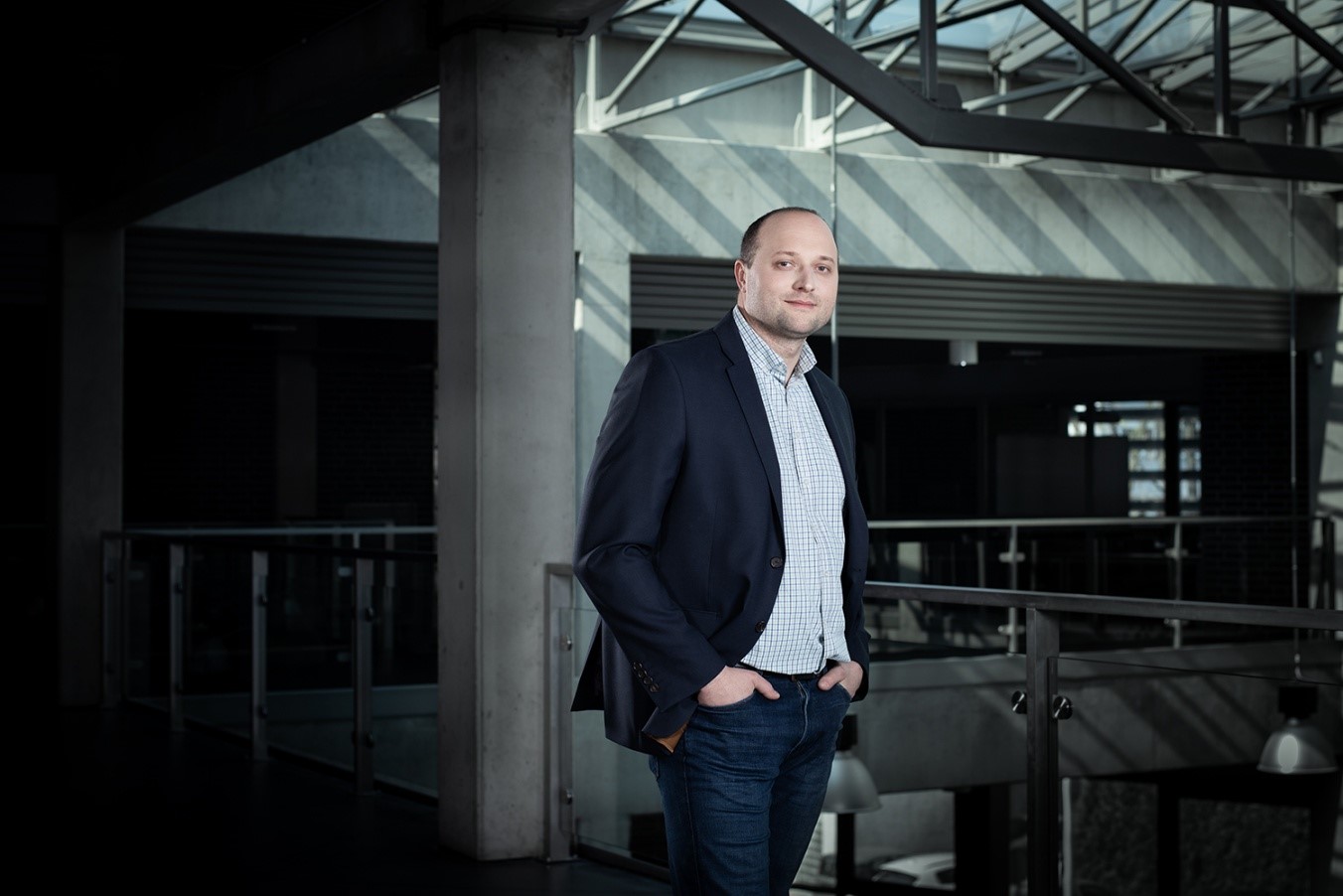
Different approaches for modeling blood flow through native and bioprosthetic aortic valve
Abstract
Each year, more than 285,000 people in Europe become eligible for significant valve surgeries, with 16,000 cases reported in Poland alone, a figure that is reportedly increasing. Continued endothelial damage over time is primarily responsible for calcified aortic valve stenosis, the leading cause of valvular heart disease. Two primary procedures address severe VS: prosthetic valve implantation through open heart surgery or transcatheter valve replacement, chosen based on patient age and existing health problems. A crucial aspect of heart valve modeling lies in the establishment of boundary conditions, which are intricately linked to the operational functionality of the left ventricle. To address this, it is essential to incorporate fully three-dimensional valve modeling with fluid–structure interaction (FSI) to accurately capture fine-scale heart hemodynamics. The intricate formation of the heart muscle makes it difficult to tackle, even with comprehensive models, as precise material properties must be established for each heart structures. To get approach that allows for fast, robust and stable simulation of the common relation between left ventricle and aortic heart valve still remain challenging problem. In this paper different methodologies that can be used for modeling blood flow through bioprosthetic valve will be discussed taking into account the FSI techniques as well as approaches for modeling blood flow itself.
Wojciech Adamczyk, Silesian University of Technology, Department of Thermal Technology, Konarskiego 22, 44-100 Gliwice, Poland
Marek Rojczyk, Silesian University of Technology, Department of Thermal Technology, Konarskiego 22, 44-100 Gliwice, Poland
Zbigniew Buliński, Silesian University of Technology, Department of Thermal Technology, Konarskiego 22, 44-100 Gliwice, Poland
Sebastian Pawlak, Silesian University of Technology, Department of Thermal Technology, Konarskiego 22, 44-100 Gliwice, Poland
Min-min Zhou, Key Laboratory of Energy Thermal Conversion and Control of Ministry of Education, School of Energy and Environment, Southeast University, Nanjing, China
Short Bio
Wojciech Adamczyk has been serving as a professor in the Department of Thermal Technology at the Silesian University of Technology since 2022. He participates in executing projects and scientific research that are crucial for technological advancements in Poland and Europe. The solutions developed, including AI-supported diagnostic systems for industrial uses, are globally innovative. Due to the professor’s scientific expertise, distinctive technological solutions are devised and applied in various industries, including bioengineering and personalized medicine.
He oversaw the efforts of research groups involved in projects funded by both national and international sources. These projects frequently entail research performed within a scientific-industrial consortium. The professor’s research unveils new pathways, such as in the area of utilizing green ammonia as an energy carrier or development novel approaches for modeling bioprosthetic heart valve.
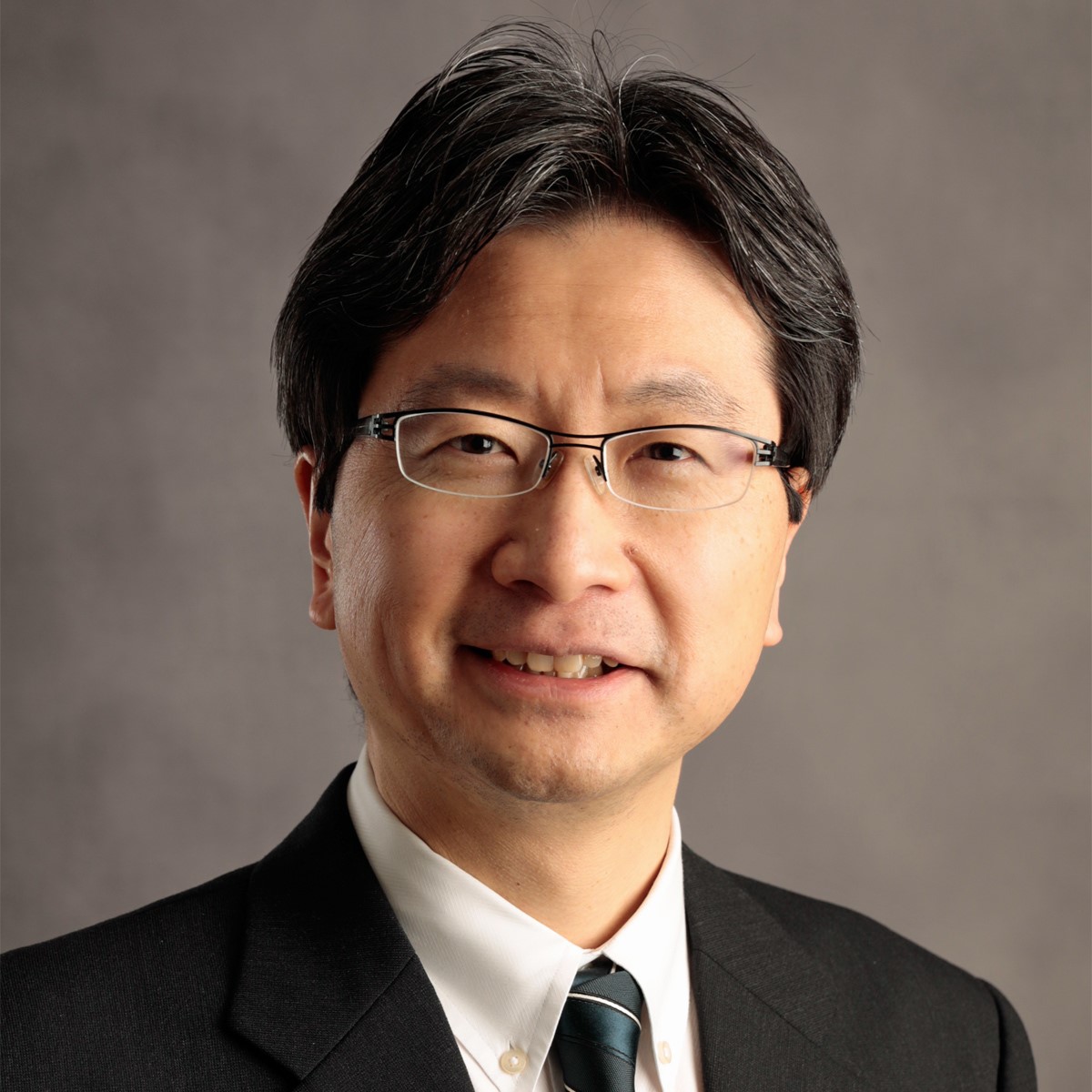
Thermal energy storage and high-performance CO2 capture by covalent organic frameworks: New functions, structures, and applications explored with periodic nanoporous materials
Abstract
Recently, a new class of crystalline porous solids called ‘Covalent Organic Frameworks (COFs)’ has emerged. Different from previous porous materials, COFs are the first kind of crystalline porous solids composed of only light elements (typically C, H, N, and O) and formed by thermally and chemically robust covalent bonds. (Note: “crystalline” means having a periodic structure and a defined pore size.) COFs’ structure and function can be designed largely by choosing building block molecules called monomers; typically, two kinds of monomers having different reaction ‘hands’ are poly-condensed to form COFs in a liquid solution. Because of the unique advantages of COFs, numerous applications have been proposed so far.
The presenter’s research career began with studies of heat exchangers and heat sinks (see bio). After several changes of his research subjects, the presenter has noticed that COFs have large potential also for the heat-and-mass transfer and thermal engineering field. The purpose of this lecture is to introduce (i) COFs as an emerging material platform, (ii) an example of a new thermal engineering material using COFs, (iii) examples of our new-structure developments that have broadened the structural diversity of COFs, and (iv) an example of how a new structure development led to a creation of novel engineering function.
Specifically, for (ii), it will be shown that the introduction of sugar alcohols into the nanopores of COFs solved the long-standing problem of large supercooling associated with sugar alcohols. For (iii), our topological control and new topology creations of COFs are presented. For (iv), our recent example of developing a new COF structure that resulted in superior CO2 capture and separation performances will be shown. Finally, an outlook for COF research and the potential relation to the heat-and-mass transfer community will be noted.
Short Bio
Yoichi Murakami started his research career as a student at Tokyo Institute of Technology, where he studied microchannel heat exchangers with single-phase liquid and two-phase boiling flow. From 1999 to 2000, he was a Japan-government-dispatched graduate student at MIT under the supervision of Prof. Bora B. Mikic at the Department of Mechanical Engineering, from which he published two papers with Prof. Bora Mikic (DOI: 10.1109/6144.910795, DOI: 10.1080/01457630304047) about theoretical studies on the design optimization of microchannel heat sinks. After working for SONY Corporation as a thermal engineer and developing a CPU-cooling unit installed in the VAIO Note VX, he switched his research subject to single-walled carbon nanotubes. He earned his PhD at the University of Tokyo in 2005 under the supervision of Prof. Shigeo Maruyama. He then conducted his postdoc research at Prof. Tatsuya Okubo’s group at the University of Tokyo and Prof. Junichiro Kono’s group at Rice University. He then became a tenure-track assistant professor at Tokyo Institute of Technology in 2009, where he commenced photon-upconversion research using intermolecular energy transfer and excited electronic states of organic molecules. After he earned his tenure and became an associate professor in 2014, he commenced thermo-electrochemical power generation (liquid thermoelectrics), where he invented the concept of forced-flow thermocells that integrated thermo-electrochemical power conversion into forced convection cooling. In 2017, he commenced research on COFs. Since 2022, he has been a professor at Tokyo Institute of Technology, which was reorganized to Institute of Science Tokyo in October 2024. His ORCID is 0000-0001-9536-1631, and ResearcherID is B-2816-2009.
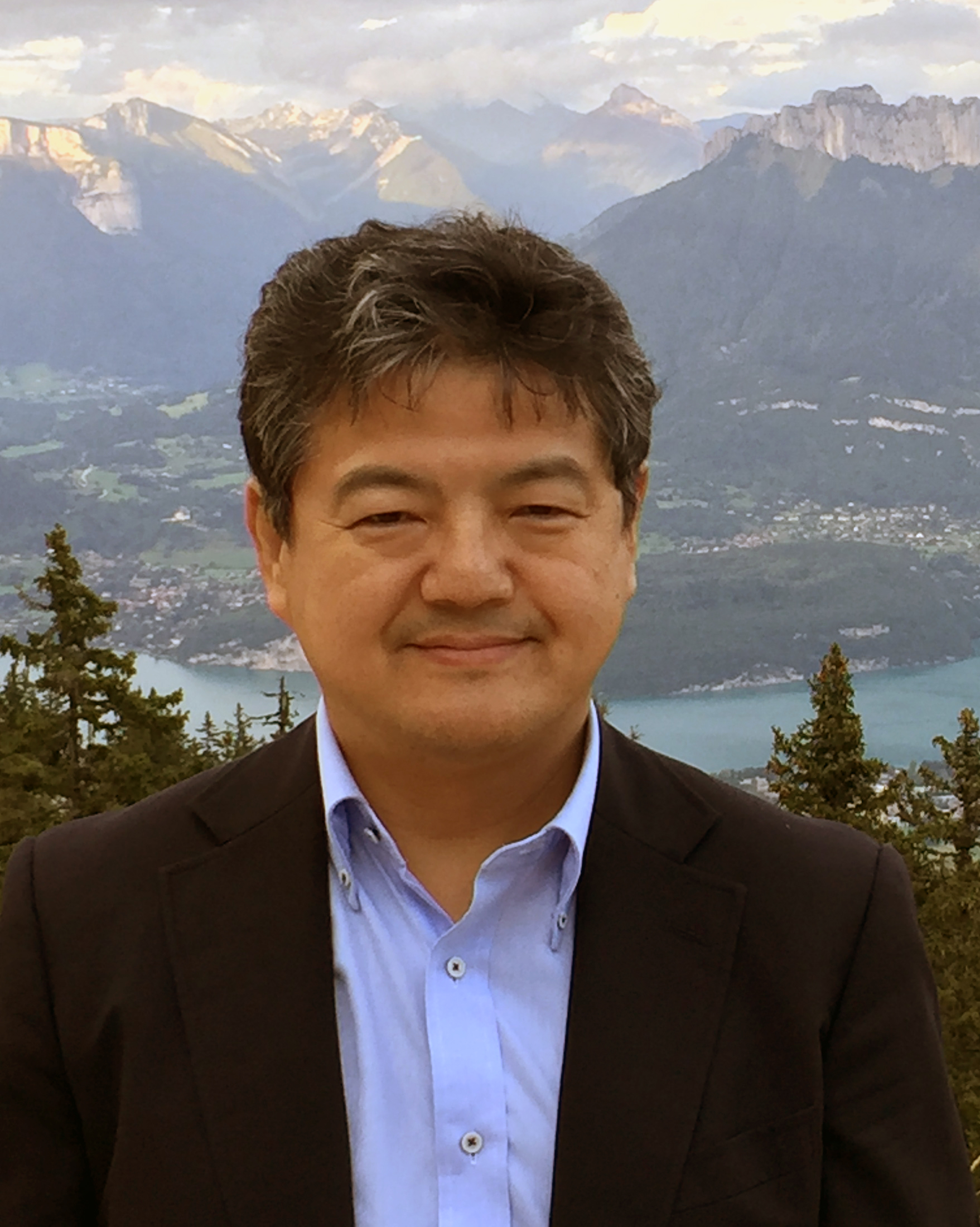
Laser Diagnostics of Ammonia Flames Toward Carbon Neutrality
Abstract
Ammonia (NH 3 ) has attracted increasing attention as a carbon-free fuel toward carbon neutrality. The inherent combustion properties of NH 3 , such as a low burning velocity and high NOx emissions, present significant challenges for its direct use as a fuel. These challenges underscore the necessity of further investigations into NH 3 combustion. In NH 3 flames, the H atom and OH radical are deeply involved in the decomposition of NH 3 and in both NOx formation and DeNOx processes. Therefore, information on H and OH distributions in NH 3 flames is crucial for developing high-fidelity kinetic models. However, LIF measurements of H atom distributions remain challenging in NH 3 flames. This is because two-photon excitation at 205 nm suffers from artifacts due to the photodissociation of NH 3 itself. In this study, in NH 3 counterflow diffusion flames, quantitative measurements of H concentrations using TALIF and semi-quantitative measurements of OH using linear LIF have been carried out, and the measurement data were compared with predictions from recent NH 3 reaction models. The present results indicate that the temperature dependence of H- and OH-related reactions in previous NH 3 kinetic models should be revisited.
Short Bio
Yuji Suzuki received the B.S., M.S., and Dr.Eng. degrees in mechanical engineering from the University of Tokyo, Tokyo, Japan, in 1987, 1989, and 1993, respectively. He is currently with the Department of Mechanical Engineering, the University of Tokyo, as a Professor. He received Fellow of Combustion Institute, IEEE Fellow, Fellow of AUTSE, and Fellow of JSME. He served as Chair of Thermal Engineering Division, The Japan Society of Mechanical Engineers, Vice President of Heat Transfer Society of Japan, Vice President of The Japan Society of Fluid Mechanics, and a Board Member of Combustion Society of Japan. His research interests include flame-to-wall interaction of ammonia/hydrocarbon flames, micro energy conversion such as energy harvesting using electrets, and optimal design/control of micro heat and fluid flow.
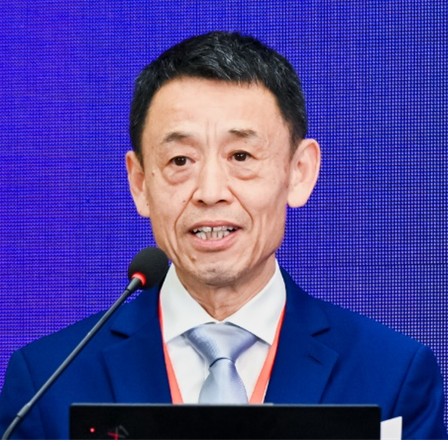
Recent advances in heat transfer for energy storage and thermal management
Abstract:
In recent years, energy storage and thermal management have become two of the most important topics in global energy, sustianability, and technical advancement, and their prominence is continuing to grow. The progress of heat transfer ensures innovative develpment of various energy storage systems and thermal management strategies in-line with relevant high quality technical requirements. In the present paper, our recent advances in heat transfer in developing high-temperature phase-change thermal energy storage with salts as media, and the applications of nano enhanced phase change material (PCM) and micro-encapsulated PCMs for power electronic thermal management are summarised and reported.
High-temperature phase-change thermal energy storage with salts as media has shown promising potential in power peak shifting, industrial waste heat recovery, concentrated solar power, etc. However, like most PCMs, their thermal conductivities are normally low, and the corrosivity is high, which makes the current metal-based heat transfer enhancement technologies unapplicable. In the present study, open-cell ceramic foam is developed from molecular mechanism to material preparation, and its compatibility with salts is assessed using advanced characterisation technologies. The heat transfer enhancement performance of ceramic foam is demonstrated for both melting and solidification processes in a shell-and-tube unit. Different configurations of ceramic foam, including pore size, porosity, filling height and outer diameters, are included and optimised to obtain a trade-off between energy storage capacity and rate. The energy storage performance of ceramic foam/salt composite PCM is also evaluated in an integrated system and shows superiority in both storage rate and capacity.
Meanwhile, the PCMs are applied to the thermal management of power electronics such as MOSFET and li-batteries. To overcome the limitations and challenges of low thermal conductivity, leakage, and corrosion of PCMs, by using microfluidics method, microencapsulated PCMs capsules as conduits for heat transfer, enabling efficient exchange between the PCM and its surroundings, are developed. The thermal performance under varying PCMs, pin fin shapes, and volume ratios was numerically evaluated. Results show that microencapsulated PCMs could reduce average temperature, improve temperature uniformity, and lower peak temperature difference.
In addition, the application of physics-informed neural networks (PINNs) is also explored in modelling fluid flow and heat transfer within intricate geometric configurations, focusing on manifold microchannel (MMC) heat sinks designed for efficient high-power IGBT cooling.
Short Bio:
Yuying Yan is Chair Professor in Thermofluids Engineering in Faculty of Engineering at University of Nottingham (UoN). With over 40-year experience, his research covers widely ranged areas of thermofluids including heat transfer enhancement, applied thermodynamics, phase change, nanofluids and nature inspired solutions for energy efficiency and thermal management. He is director of heat transfer at UoN, an executive member/director of UK national heat transfer committee, member of UK EPSRC peer review college, fellow of International Academy of Bionic Science (IABS), fellow of International Society of Bionic Engineering (ISBE) and fellow of World Society of Sustainable Energy (WSSE). He obtained a few awards including David Kenning Award of two phase (boiling) heat transfer, li Dak-sum chair professor award, Yangzi-river guest chair professor award, Tang-aoqing guest chair professor award, Royal Society Youth Award and Design & Nature Award on mimicking natures for heat transfer, RAE Case Award of thermal management, etc. He was head of group of fluids & thermal engineering, faculty director of global engagement at UoN, deputy general secretary of ISBE, panel member of ERC advanced research grant, etc. He has chaired or co-chaired over 10 international conferences including ICBEs (2010, 2016), ASME Micro/nano heat mass transfer (2024), 16th UKNHTC (2019), etc. He has supervised about 50 PhD students so far, authored or co-authored over 500 papers including over 380 journal papers (H-index 73, i10-index: 321, and since 2020 H-index: 64). He serves or had editorship/in editorial board for CSITE, IJHMT, IJTS, ATE, TSEP, e-Prime: AEE-E-E, Scientific Reports, JBE, ESS, Automotive Innovation, and Biomimetics. Prof. Yan obtained BEng in international combustion engine engineering from Jilin University of Technology (now Jilin University) in January 1982, then became a lecturer & associate professor at the same university until 1992 and obtained his MSc from Shanghai Institute of Mechanical Engineering in 1986. He studied at City University of London since later 1992 and obtained his PhD in two-phase heat transfer in 1996 and worked at University of Surrey as a research fellow (1996-1998), and senior lecturer and Reader in thermofluids at Nottingham Trent University before joining the University of Nottingham since 2004.